Grants Funded
As of March 2023, PRF has provided over $9.3 million to fund 85 grants for Progeria-related research projects performed in 18 states and 14 other countries!In our continuing effort to encourage researchers to work in this field, we solicit proposals worldwide and through our scientific workshops. All projects are carefully evaluated by our Medical Research Committee and Board of Directors and we strive to fund research targeted to help us reach our goal of developing treatments and the cure for Progeria.
Grants We Have Funded and Biological Sketches of the Researchers
- March 2023: to Ricardo Villa-Bellosta’s, Santiago de Compostela, Spain. “Progeria and Vascular Calcification: Diet and Treatments.”
- November 2022: to Silvia Ortega Gutierrez, Complutense University, Madrid Spain
“Reduction of Progerin Levels by Small Molecules as a New Approach for Treating Progeria” - October 2022: to Laurence Arbibe, Institut Necker-Enfants Malades (INEM), Paris, France
“Unraveling Accelerated Intestinal Ageing in HGPS Physiopathology: an Integrative Approach” - January 2022: to Karima Djabali, Technical University of Munich, München, Germany.
“Treatment of Hutchinson-Gilford Progeria Syndrome with two FDA approved drugs combined — Lonafarnib and Baricitinib, specific inhibitors of farnesyltransferase and JAK1/2 kinase respectively” - July 2021: to Chiara Lanzuolo, Instituto Nazionale Genetica Molecolare, Milano, Italy.
“Monitoring genome structure and function’s recovery upon pharmacological treatments in Hutchinson Gilford Progeria Syndrome” - July 2021: to Mario Cordero, Biomedical Research and Innovation Institute of Cadiz (INIBICA), Cadiz, Spain. “Inflammasome inhibition and polypill strategy in the treatment of HGPS”
- July 2020 (start date August 2020) to Elsa Logarinho, Aging and Aneuploidy Group, IBMC – Instituto de Biologia Molecular e Celular, Porto, Portugal, “Small-molecule enhancement of chromosomal stability as senotherapeutic strategy for HGPS”
- January 2020 (start date February 2020): to Dr. Vicente Andrés, PhD, Centro Nacional de Investigaciones Cardiovasculares (CNIC), Madrid, Spain. “Generation of transgenic Lamin C-Stop (LCS) and CAG-Cre Yucatan minipigs to breed HGPS Yucatan minipigs for preclinical trials”
- January 2020 (start date August 2020): to Dr. Giovanna Lattanzi, PhD, CNR Institute of Molecular Genetics Unit of Bologna, Italy. “Improving the quality of life in Progeria: A first trial in the murine LmnaG609G/G609G model”
- January 2020 (start date February 2020): to Dr. Bum-Joon Park, PhD, Pusan National University, Republic of Korea. “Effect of progerinin (SLC-D011) and lonafarnib on HGPS: A combined in Vitro and in Vivo”
- January 2020 (start date January 2020): to David R. Liu, PhD, Richard Merkin Professor and Director of the Merkin Institute of Transformative Technologies in Healthcare, Director of the Chemical Biology and Therapeutic Sciences Program, Core Institute Member and Vice-Chair of the Faculty, Broad Institute, Investigator, Howard Hughes Medical Institute, Thomas Dudley Cabot Professor of the Natural Sciences, and Professor of Chemistry & Chemical Biology, Harvard University. “Base editing treatments for HGPS”.
- December 2019 (start date December 2019): To Dr. Abigail Buchwalter, PhD, University of California San Francisco. “Defining the feasibility of progerin clearance as a therapy for HGPS.”
- October 2019 (start date November 2019): To Dr. Colin Stewart, PhD, Institute of Medical Biology, Immunos, Singapore. “Breaking the LINC to Suppress Progeria.”
- June 2019 (start date October 2019): To Dr. Martin Bergö, PhD, Professor, Karolinska Institutet, Huddinge. “Development and Preclinical Testing of ICMT Inhibitors for HGPS Therapy.”
- November 2017 (start date November 2017): To Dr. Richard K. Assoian, PhD, Professor, University of Pennsylvania, Philadelphia, PA. “Analysis and attenuation of arterial stiffness in HGPS: implications for lifespan.”
- September 2017 (start date October 2017): To Dr. Toren Finkel MD/PhD, Director, Aging Institute, Pittsburgh, PA. “Vascular autophagy and HGPS Progression.”
- December 2016 (start date February 1, 2017): To Juan Carlos Belmonte Izpisua, PhD, Professor, Gene Expression Laboratories at The Salk Institute for Biological Studies, La Jolla, CA, USA. He is the former director and assisted in establishing the Center for Regenerative Medicine in Barcelona. He has a Ph.D. in Biochemistry and Pharmacology from The University of Bologna, Italy and from the University of Valencia, Spain. He is a postdoctoral fellow from the University of Marburg’ European Molecular Biology Laboratory (EMBL), in Heidelberg, Germany and UCLA, USA. “Amelioration of premature aging phenotypes in Hutchinson-Gilford Progeria Syndrome.”
- December 2016 (start date February 1, 2017): To Ricardo Villa-Bellosta, PhD, Team Leader, Fundación Jiménez Díaz University Hospital Health Research Institute (FIIS-FJD, Spain). “Therapeutic strategies to recover the normal pyrophosphate homeostasis in HGPS.”
- December 2016 (start date February 1, 2017): To Isabella Saggio, PhD, Associate Professor of Genetics and Gene Therapy, Sapienza University (Rome, Italy). “The lamin-interacting telomeric protein AKTIP in HGPS.”
- December 2016 (start date March 1, 2017): To Tom Misteli, PhD, NIH Distinguished Investigator and the Director of the Center for Cancer Research at the National Cancer Institute, NIH. “In vivo testing of candidate HGPS therapeutics.”
- August 2016 (start date January 1, 2017): To Silvia Ortega-Gutiérrez, Universidad Complutense de Madrid, Spain: Associate Professor since 2013; Ramón y Cajal Scholar, Organic Chemistry Dept., 2008-2012; PhD, 2004; Worked under the supervision of Prof. María Luz López-Rodríguez, Medicinal Chemistry Dept. Fulbright Scholar, Prof. Ben Cravatt’s Lab, Chemical Biology and Proteomics, The Scripps Research Institute in California, USA; “New isoprenylcysteine carboxylmethyltransferase (ICMT) inhibitors for the treatment of progeria.
- July 2016 (start date October 1, 2016): To Roland Foisner, PhD, Professor of Biochemistry, Medical University Vienna and Deputy Director, Max F. Perutz Laboratories, Vienna, Austria. Scientific coordinator, former European network project EURO-Laminopathies and Editor-in-Chief, journal Nucleus; “Contribution of endothelial cell dysfunction to cardiovascular disease in progeria and implications for diagnostic and therapeutic targets.”
- December 2015 (start date January 1, 2016): To Juan Carlos Belmonte Izpisua, PhD, Professor, Gene Expression Laboratories at The Salk Institute for Biological Studies, La Jolla, CA, USA. “The use of novel technologies to identify and validate potential therapeutic compounds for the treatment of Hutchinson-Gilford Progeria Syndrome.”
- December 2015 (start date March 1, 2016): To Jed William Fahey, Sc.D., Director, Cullman Chemoprotection Center, Assistant Professor, Johns Hopkins University, School of Medicine, Department of Medicine, Division of Clinical Pharmacology, Department of Pharmacology & Molecular Sciences; Bloomberg School of Public Health, Department of International Health, Center for Human Nutrition; “The capacity of plant-derived isothiocyanates to surpass the efficacy of sulforaphane, with reduced toxicity to Progeria cell lines.”
- June 2015 (start date July 1, 2015): To Bum-Joon Park, PhD, Chairperson and Professor of the Department of Molecular Biology, Pusan National University, Republic of Korea; “Improvement of therapeutic effect of JH4, progerin-lamin A/C binding inhibitor, against progeria syndrome.”
- June 2015 (start date September 1, 2015): To John P. Cooke, MD, PhD, Joseph C. “Rusty” Walter and Carole Walter Looke Presidential Distinguished Chair in Cardiovascular Disease Research, Chair and Full Member of the Department of Cardiovascular Sciences Houston Methodist Research Institute, Director of the Center for Cardiovascular Regeneration Houston Methodist DeBakey Heart and Vascular Center, Houston, TX; “Telomerase Therapy for Progeria.”
- June 2015 (start date September 1, 2015): To Francis Collins, MD, PhD, Director of the National Institutes of Health (NIH/NHGRI), Bethesda, MD; “Post-doctoral Candidate Funding for HGPS Research.”
- June 2015 (start date September 1, 2015): Dudley Lamming, PhD, Assistant Professor in the Department of Medicine at the University of Wisconsin-Madison, Co-Director of the UW Department of Medicine Mouse Metabolic Phenotyping Platform, Madison, WI; “Intervention in Progeria by Restriction of Specific Dietary Amino Acids”.”
- June 2015 (start date September 1, 2015): To Cláudia Cavadas, PhD, Center for Neuroscience and Cell Biology (CNC), University of Coimbra, Coimbra Portugal; “Peripheral NPY reverts HGPS phenotype: a study in human fibroblasts and mouse model”
- December 2014 (start date April 1, 2015): To Célia Alexandra Ferreira de Oliveira Aveleira, PhD, Center for Neuroscience and Cell Biology (CNC) and Institute for Interdisciplinary Research (IIIUC), University of Coimbra Portugal; “Ghrelin: a novel therapeutic intervention to rescue the phenotype of Hutchinson‐Gilford Progeria Syndrome”
- December 2014 (start date February 1, 2015): To Jesús Vázquez Cobos, PhD, Centro Nacional de Investigaciones Cardiovasculares, Madrid, Spain; “Quantitation of Farnesylated Progerin in Progeroid Mouse Tissues and Circulating Leukocytes from Hutchinson-Gilford Progeria Patients”
- December 2014 (start date February 1, 2015): To Marsha Moses, PhD, Boston Children’s Hospital, Boston, MA; “Discovering Novel Non-Invasive Biomarkers for Hutchinson-Gilford Progeria Syndrome”
- December 2014 (start date March 1, 2015): To Joseph Rabinowitz, PhD, Temple University School of Medicine, Philadelphia, PA; “Adeno-associated virus mediated co-delivery of wild type lamin A and microRNA against progerin”
- July 2014 (start date November 1, 2014): To Vicente Andrés García, PhD, Centro Nacional de Investigaciones Cardiovasculares, Madrid, Spain; “Generation of a HGPS Knock-in Pig Model to Expedite the Developement of Effective Clinical Applications”.
- June 2013 (start date September 1, 2013): To Dr. Brian Snyder, PhD, : Beth Israel Deaconess Medical Center, Boston, MA.; “Characterization of the Musculoskeletal, Craniofacial and Skin Phenotypes of the G608G Progeria Mouse Model”.
- June 2013 (start date September 1, 2013): To Dr. Robert Goldman, PhD, : Northwestern University; “New Insights into the Role of Progerin in Cellular Pathology”.
- June 2013 (start date September 1, 2013): To Dr. Christopher Carroll, PhD, : Yale University, New Haven, CT.; “Regulation of progerin abundance by the inner nuclear membrane protein Man1”.
- June 2013 (start date September 1, 2013): To Dr. Katharine Ullman,: University of Utah, Salt Lake City, UT; “Elucidating how progerin impacts the role of Nup153 in the DNA damage response”.
- June 2013 (start date September 1, 2013): To Dr. Katherine Wilson,: Johns Hopkins School of Medicine, Baltimore, MD; “Natural expression of progerin and consequences of reduced lamin A tail O-GlcNAcylation”.
- June 2013 (start date September 1, 2013): To Dr. Brian Kennedy,: Buck Institute for Research on Aging, Novato, CA; “Small Molecule Aging Intervention in Progeria”.
- December 2012 (start date August 2013): To Dr. Gerardo Ferbeyre, PhD, University of Montreal, Montreal, Canada: “Control of progerin clearance by defarnesylation and phosphorylation at serine 22“
- December 2012 (start date February 2013): To Dr. Thomas Misteli, PhD, National Cancer Institute NIH, Bethesda, MD: “Small molecule discovery in HGPS”
- December 2012 (start date April or May 2013): To Karima Djabali, PhD, Technical University of Munich, Munich, Germany: “Progerin dynamics during cell cycle progression”
- September 2012: To Tom Misteli, PhD, National Cancer Institute, NIH, Bethesda, MD; Technician Award
- July 2012 (start date September 1, 2012): To Vicente Andrés García, PhD, Centro Nacional de Investigaciones Cardiovasculares, Madrid, Spain; “Quantification of farnesylated progerin and identification of genes that activate aberrant LMNA splicing in Hutchinson-Gilford Progeria Syndrome”
- July 2012 (start date September 1, 2012): To Dr. Samuel Benchimol, York University, Toronto, Canada: “Involvement of p53 in the premature senescence of HGPS”
- July 2012: To Tom Misteli, PhD, National Cancer Institute, NIH, Bethesda, MD; Specialty Award Amendment
- December 2011 (start date March 1, 2012): To Dr. Thomas Dechat, PhD, Medical University of Vienna, Austria; “Stable membrane association of progerin and implications for pRb signaling
- December 2011 (start date March 1, 2012): To Maria Eriksson,PhD, Karolinska Institute, Sweden; Analyzing the possibility for Progeria disease reversal
- December 2011 (start date March 1, 2012): To Colin L. Stewart D.Phil, Institute of Medical Biology, Singapore; “Defining themolecular basis to vascular smooth muscle deterioration in Progeria
- September 2011 (start date January 1, 2012): To Dr. Dylan Taatjes, University of Colorado, Boulder, CO: Comparative metabolic profiling of HGPS cells and evaluation of phenotypic changes upon modulation of key metabolites
- June 2011 (start date January 1, 2012): to Jan Lammerding, PhD, Cornell University’s Weill Institute for Cell and Molecular Biology, Ithaca, NY; Vascular smooth muscle cell dysfunction in Hutchinson-Gilford Progeria Syndrome
- December 2010 (start date April 1, 2011): To Robert D. Goldman, PhD, Northwestern University Medical School, Chicago, IL; A Role for B-type Lamins in Progeria
- December 2010: To John Graziotto, PhD, Massachusetts General Hospital, Boston, MA; Clearance of Progerin Protein as Therapeutic Target in Hutchinson-Gilford Progeria Syndrome
- December 2010 (Start date April 1, 2011): To Tom Glover PhD, U Michigan, Ann Arbor, MI; “Identifying Genes for Progeria and Premature Aging by Exome Sequencing”
- December 2010 (start date March 1, 2011): To Yue Zou, PhD, East Tennessee State University, Johnson City, TN; Molecular Mechanisms of Genome Instability in HGPS
- December 2010 (start date January 1, 2011): To Kan Cao, PhD, University of Maryland, College Park, MD; Rapamycin Reverses Cellular Phenotype and Enhanced Mutant Protein Clearance in Hutchinson Gilford Progeria Syndrome
- June 2010 (start date October 1, 2010): To Evgeny Makarov, PhD, Brunel University, Uxbridge, United Kingdom; Identification of the LMNA Splicing Regulators by Comparative Proteomics of the Spliceosomal Complexes.
- October 2009: to Jason D. Lieb, PhD, University of North Carolina, Chapel Hill NC; Interactions between genes and lamin A/progerin: a window to understanding Progeria pathology and treatment
- October 2009: To Tom Misteli, PhD, National Cancer Institute, NIH, Bethesda, MD; Identification of small molecule modulators of LMNA splicing
- August 2009: to William L. Stanford, PhD, University of Toronto, Canada
Induced-Pluripotent Stem Cells (iPSC) from HGPS patient fibroblasts to elucidate the molecular mechanism associated with diminishing vascular function - July 2009: to Jakub Tolar, University of Minnesota, Minneapolis, MN;
Correction of human progeria induced pluripotent cells by homologous recombination - September 2008 (start date January 2009): To Kris Noel Dahl, PhD, Carnegie Mellon University, Pittsburgh, PA;
“Quantification of progerin recruitment to membranes” - October 2007: To Michael A. Gimbrone, Jr., MD, Brigham and Women’s Hospital and Harvard Medical School, Boston, MA Endothelial Dysfunction and the Pathobiology of Accelerated Atherosclerosis in Hutchinson-Gilford Progeria Syndrome
- September 2007 (Start date January 2008): To Bryce M. Paschal, PhD, University of Virginia School of Medicine, Charlottesville, VA; Nuclear Transport in Hutchinson-Guilford Progeria Syndrome
- May 2007: To Thomas N. Wight, PhD, Benaroya Research Institute, Seattle, WA; The use of a mouse model of HGPS to define the influence of Lamin AD50 expression on vascular extracellular matrix production and the development of vascular disease.
- March 2007: To Jemima Barrowman, PhD, Johns Hopkins School of Medicine, Baltimore, MD; Fundamental Mechanism of Lamin A Processing: Relevance to the Aging Disorder HGPS
- August 2006: To Zhongjun Zhou, PhD, University of Hong Kong, China. Stem cell therapy of Laminopathy-based Premature Aging
- August 2006: To Michael Sinensky, PhD, East Tennessee State University, Johnson City, TN;
Effect of FTIs’ on the Structure and Activity of Progerin - June 2006: To Jan Lammerding, PhD, Brigham and Women’s Hospital, Cambridge, MA; The role of nuclear mechanics and mechanotransduction in Hutchinson-Gilford Progeria syndrome and the effect of farnesyltransferase inhibitor treatment
- June 2006:To Tom Misteli, PhD, National Cancer Institute, NIH, Bethesda, MD;
Molecular Therapy Approaches for HGPS via correction of pre-mRNA Splicing - June 2005: To Lucio Comai, PhD, University of Southern California, Los Angeles, CA; Functional Analysis of Hutchinson-Gilford Progeria Syndrome
- June 2005: To Loren G. Fong, PhD, University of California, Los Angeles, CA;
New Mouse Models to Study the Cause of Hutchinson-Gilford Progeria Syndrome - January 2005: To Dr. Karima Djabali, PhD, Columbia University, New York, NY; Defining progerin dominant negative effects on the nuclear functions in HGPS cells
- December 2004: To Robert D. Goldman, PhD and Dale Shumaker, PhD, Northwestern University Medical School, Chicago, Illinois
The Effects of the Major Mutation on Human Lamin A’s Function in DNA Replication - August 2004 (Start date January 2005): To Stephen Young, PhD, UCLA, Los Angeles, CA; for his project entitled “Genetic Experiments in Mice to Understand Progeria”.
- April 2004: To Monica Mallampalli, Ph D, and Susan Michaelis, PhD, The Johns Hopkins School of Medicine, Baltimore, MD; “Structure, Location and Phenotypic Analysis of Progerin, the mutant form of prelamin A in HGPS”
- December 2003: To Joan Lemire, PhD, Tufts University School of Medicine, Boston, MA; “Developing a smooth muscle cell model for the study of Hutchinson-Gilford Progeria Syndrome: Is aggrecan a significant component of the phenotype?”
- December 2003: To W. Ted Brown, MD, PhD, FACMG, The Institute for Basic Research in Developmental Disabilities, Staten Island, NY: “Dominant Negative Mutation Effects of Progerin”
- September 2003: To Thomas W. Glover, Ph.D., University of Michigan, “
Role of Lamin A Mutations in Hutchinson-Gilford Progeria Syndrome” - May 2002: To Associate Professor Anthony Weiss at the University of Sydney, Australia, Title of project: Candidate Molecular Markers for Hutchinson-Gilford Progeria Syndrome
- January 2001 (Start date July 2001): To John M. Sedivy, PhD Brown University, Providence, RI; & Junko Oshima, MD, PhD, University of Washington, Seattle, WA, Cloning of the Gene for Hutchinson-Gilford Progeria Syndrome by Somatic Cell Complementation”
- December 2001 (Start date February 2002): To Thomas W. Glover, Ph.D., University of Michigan, “Genome Maintenance in Hutchinson-Gilford Progeria Syndrome”
- January 2000: To Leslie B. Gordon, MD, PhD, Tufts University School of Medicine , Boston, MA; “The Role of Hyaluronic Acid in Hutchinson-Gilford Progeria Syndrome”
- August 1999: To Leslie B. Gordon, MD, PhD, Tufts University School of Medicine , Boston, MA; “The Pathophysiology of Arterioscleros is in Hutchinson-Gilford Progeria Syndrome”
March 2023: to Ricardo Villa-Bellosta’s, Santiago de Compostela, Spain. “Progeria and Vascular Calcification: Diet and Treatments.”
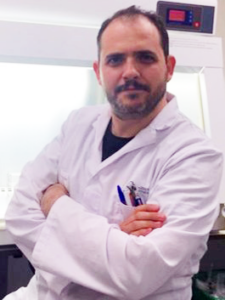 A key area of research in Dr. Villa-Bellosta’s lab is the excessive calcification of cardiovascular system, including the aorta, coronary artery, and aortic valves, which largely determinates the early mortality in children with HGPS. The molecular mechanism of the vascular calcification in HGPS has been previously analyzed in LmnaG609G/+ knock-in mice, which show a profound deficiency of extracellular pyrophosphate, a key endogenous inhibitor of calcification. In this project we aim to determine the molecular mechanisms that promote or reduce vascular calcification and longevity in HGPS, focusing on the importance of specific nutrients that are consumed daily. Moreover, we plan to analyze the efficacy of two new potential therapeutic approaches (which restore pyrophosphate homeostasis) that could improve the quality of life and longevity of HGPS mice and children. We plan to use LmnaG609G/+ knock-in mice and aorta vascular smooth muscle cells to analyze the effect of these nutrients/treatments on the vascular calcification and longevity in vivo both alone and combined with FTI-lonafarnib.
A key area of research in Dr. Villa-Bellosta’s lab is the excessive calcification of cardiovascular system, including the aorta, coronary artery, and aortic valves, which largely determinates the early mortality in children with HGPS. The molecular mechanism of the vascular calcification in HGPS has been previously analyzed in LmnaG609G/+ knock-in mice, which show a profound deficiency of extracellular pyrophosphate, a key endogenous inhibitor of calcification. In this project we aim to determine the molecular mechanisms that promote or reduce vascular calcification and longevity in HGPS, focusing on the importance of specific nutrients that are consumed daily. Moreover, we plan to analyze the efficacy of two new potential therapeutic approaches (which restore pyrophosphate homeostasis) that could improve the quality of life and longevity of HGPS mice and children. We plan to use LmnaG609G/+ knock-in mice and aorta vascular smooth muscle cells to analyze the effect of these nutrients/treatments on the vascular calcification and longevity in vivo both alone and combined with FTI-lonafarnib.
November 2022: to Silvia Ortega Gutierrez, Complutense University, Madrid Spain
“Reduction of Progerin Levels by Small Molecules as a New Approach for Treating Progeria”
Recent evidence suggests that the most single important factor in the fatal outcome of the Hutchinson-Gilford progeria syndrome (HGPS or progeria) is the accumulation of progerin, the mutated form of lamin A that causes progeria. Genetic approaches aimed at decreasing the levels of progerin either by interacting with its RNA or by performing gene correction induce significant improvements in the disease phenotype. In this project we will address the direct reduction of progerin by the design and synthesis of small molecules termed proteolysis-targeting chimeras (PROTACs). This class of compounds, developed for other diseases mainly within the last decade, is able to specifically bind a protein and tag it for proteosomal degradation, therefore reducing its levels. Starting with a hit previously identified in our laboratory, we will carry out a medicinal chemistry program aimed at obtaining improved compounds in terms of biological activity and pharmacokinetic parameters. The optimal compound(s) will be assessed for efficacy in an in vivo model of progeria.
 October 2022: to Laurence Arbibe, Institut Necker-Enfants Malades (INEM), Paris, France
October 2022: to Laurence Arbibe, Institut Necker-Enfants Malades (INEM), Paris, France
“Unraveling Accelerated Intestinal Ageing in HGPS Physiopathology: an Integrative Approach”
Dr Arbibe’s lab recently showed that chronic inflammation extensively altersquality-control of pre-mRNA splicing in the gut, one of the consequences being the production of the progerin protein. In the present project, she will explore the impact of progerin toxicity on the intestinal epithelium, monitoring effects on stem cell renewal and integrity of the mucosal barrier. She will also aim at identifying pro-aging environmental cues affecting RNA splicing in HGPS by implementing a reporter mouse model enabling in vivo tracking of the progerin-specific splicing event. Overall, this project will address the consequences of progeria disease on the integrity of the gut, while also providing the scientific community with new resources for investigating tissue- and cell-specific drivers of accelerated ageing in HGPS.

January 2022: to Dr. Karima Djabali, PhD, Technical University of Munich, Munich, Germany: “Treatment of Hutchinson‐Gilford Progeria Syndrome with two FDA approved drugs combined — Lonafarnib and Baricitinib, specific inhibitors of farnesyltransferase and JAK1/2 kinase respectively.”
Dr Djabali’s project will test in a mouse model of HGPS whether the treatment with the combination of Lonafarnib and Baricitinib, an anti-inflammatory drug, will delay the development of the typical HGPS pathologies, namely vascular disease, skin atrophy, alopecia, and lipodystrophy. Her previous findings link the JAK-STAT pathway with inflammation and cellular disease features of HGPS. HGPS cellular exposure to baricitinib improved cell growth and mitochondrial function, reduced pro-inflammatory factors, reduced progerin levels, and improved adipogenesis. Furthermore, administration of baricitinib with lonafarnib improved some cellular phenotypes over and above lonafarnib alone.

July 2021: to Chiara Lanzuolo, Instituto Nazionale Genetica Molecolare, Milano, Italy.
“Monitoring genome structure and function’s recovery upon pharmacological treatments in Hutchinson Gilford Progeria Syndrome”
Dr Lanzuolo is an expert in the field of DNA 3D structure. Her group recently reported that the cell-specific tridimensional structure of the genome is held by the correct assembly of nuclear lamina and is rapidly lost in progeria pathogenesis. In this project she will use cutting edge technologies on a progeric mouse model to specifically address the molecular mechanisms taking place during the early phases of the disease that either allow or accelerate the onset of the pathology. Furthermore, she will analyze functional genome recovery upon pharmacological treatments.
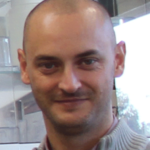 July 2021: to Mario Cordero, Biomedical Research and Innovation Institute of Cadiz (INIBICA), Cadiz, Spain.
July 2021: to Mario Cordero, Biomedical Research and Innovation Institute of Cadiz (INIBICA), Cadiz, Spain.
“Inflammasome inhibition and polypill strategy in the treatment of HGPS”
Dr. Cordero´s project will explore molecular implications of the NLRP3-inflammasome complex in the pathophysiology of Progeria and investigate effects of a specific inhibitor of NLRP3-inflammasome with lonafarnib. His previous findings show a possible role of NLRP3 and a potential effect of its inhibition on the survival of a Progeria mouse model. He will now compare single drug treatment lonafarnib with a specific inhibitor of NLRP3 and a combination treatment of both to determine which is most effective. The results of this project will hopefully help to accelerate a clinical trial in Progeria using two compounds tested in human phase 2a trials with good effect and tolerability.

July 2020: (start date August 2020) to Elsa Logarinho, Aging and Aneuploidy Group, IBMC – Instituto de Biologia Molecular e Celular, Porto, Portugal, “Small-molecule enhancement of chromosomal stability as senotherapeutic strategy for HGPS”
Dr. Logarinho’s project aims to explore the effects of a small-molecule agonist of the microtubule (MT)-depolymerizing kinesin-13 Kif2C/MCAK (UMK57), to counteract HGPS cellular and physiological features. Her previous findings grade Kif2C as a key player in both genomic and chromosomal instability, which are causally linked, and also established as primary causes of progeroid syndromes. Stabilizing Progeria chromosomes at the cellular level aims to improve disease throughout the body.
 January 2020: to Dr. Vicente Andrés, PhD, Centro Nacional de Investigaciones Cardiovasculares (CNIC), Madrid, Spain. “Generation of transgenic Lamin C-Stop (LCS) and CAG-Cre Yucatan minipigs to breed HGPS Yucatan minipigs for preclinical trials”
January 2020: to Dr. Vicente Andrés, PhD, Centro Nacional de Investigaciones Cardiovasculares (CNIC), Madrid, Spain. “Generation of transgenic Lamin C-Stop (LCS) and CAG-Cre Yucatan minipigs to breed HGPS Yucatan minipigs for preclinical trials”
A key area of research in Dr. Andrés’ lab is directed towards the generation of new animal models of Progeria. Large animal models recapitulate the main hallmarks of human disease much better than mouse models, allowing us to investigate cardiovascular disease and test therapies. Dr. Andrés’ model will improve upon a new minipig model of Progeria that was previously funded by PRF.
 January 2020: to Dr. Giovanna Lattanzi, PhD, CNR Institute of Molecular Genetics Unit of Bologna, Italy. “Improving the quality of life in Progeria: A first trial in the murine LmnaG609G/G609G model”
January 2020: to Dr. Giovanna Lattanzi, PhD, CNR Institute of Molecular Genetics Unit of Bologna, Italy. “Improving the quality of life in Progeria: A first trial in the murine LmnaG609G/G609G model”
Dr. Lattanzi will address quality of life in Progeria, which is related to a chronic inflammatory state. Normalizing the inflammatory state may help patients face pharmacological treatments; if their health state is improved, they can attain better efficacy and extend lifespan. Dr. Lattanzi will test strategies for reducing chronic inflammation in a Progeria mouse model, with the goal of transferring results to patients.
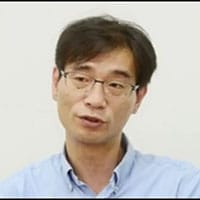 January 2020: to Dr. Bum-Joon Park, PhD, Pusan National University, Republic of Korea. “Effect of progerinin (SLC-D011) and lonafarnib on HGPS: A combined in Vitro and in Vivo”
January 2020: to Dr. Bum-Joon Park, PhD, Pusan National University, Republic of Korea. “Effect of progerinin (SLC-D011) and lonafarnib on HGPS: A combined in Vitro and in Vivo”
Dr. Park has developed a drug called progerinin that inhibits progerin and inhibits disease in progeria cells in mice. Dr. Park will now investigate the synergistic effects of progerinin with lonafarnib. He will compare single drug treatment (lonafarnib) and a combination treatment (progerinin and lonafarnib) to determine which is most effective. If the drug combination has low toxicity, a combined clinical trial of progerinin and lonafarnib could be on the horizon!
 January 2020: To David R. Liu, PhD, Richard Merkin Professor and Director of the Merkin Institute of Transformative Technologiesin Healthcare, Director of the Chemical Biology and Therapeutic Sciences Program, Core Institute Member and Vice-Chair of the Faculty, Broad Institute, Investigator, Howard Hughes Medical Institute, Thomas Dudley Cabot Professor of the Natural Sciences, and Professor of Chemistry & Chemical Biology, Harvard University.“Base editing treatments for HGPS”.
January 2020: To David R. Liu, PhD, Richard Merkin Professor and Director of the Merkin Institute of Transformative Technologiesin Healthcare, Director of the Chemical Biology and Therapeutic Sciences Program, Core Institute Member and Vice-Chair of the Faculty, Broad Institute, Investigator, Howard Hughes Medical Institute, Thomas Dudley Cabot Professor of the Natural Sciences, and Professor of Chemistry & Chemical Biology, Harvard University.“Base editing treatments for HGPS”.
Dr. Liu’s lab will perform testing and validation of new base editor variants to correct the pathogenic G608G allele back to wild-type LMNA, development and production of viruses to deliver this editor and the appropriate guide RNA into patient-derived cells, development and production of the viruses to deliver this editor and the appropriate guide RNA in vivo, off-target DNA and off-target RNA analyses, RNA and protein analyses of treated patient-derived cells, and support for additional experiments and analyses needed
 December 2019: to Dr. Abigail Buchwalter, is an Assistant Professor at the Cardiovascular Research Institute and the Department of Physiology at the University of California, San Francisco. Projects in the Buchwalter lab center around defining the mechanisms that govern the establishment, specialization, and maintenance of nuclear organization across cell types. Of particular interest is the role of the nuclear lamina in instructing the organization of the genome within the nucleus, and defining how this order is disrupted by disease-linked mutations.
December 2019: to Dr. Abigail Buchwalter, is an Assistant Professor at the Cardiovascular Research Institute and the Department of Physiology at the University of California, San Francisco. Projects in the Buchwalter lab center around defining the mechanisms that govern the establishment, specialization, and maintenance of nuclear organization across cell types. Of particular interest is the role of the nuclear lamina in instructing the organization of the genome within the nucleus, and defining how this order is disrupted by disease-linked mutations. October 2019: to Dr. Stewart a highly experienced investigator in the field of Progeria research. Over the last decade, his research has centered on laminopathies, a heterogeneous collection of diseases all arising from mutations in the LaminA gene that affect aging, cardiovascular function, and muscular dystrophy. He and his colleagues have shown that deletion of a protein called SUN1 reverses weight loss and increases survival in progeria-like mice. He will now perform drug screening based on this finding, examining thousands of chemicals for any that may disrupt SUN1 and could potentially serve as new drugs to treat children with Progeria.
October 2019: to Dr. Stewart a highly experienced investigator in the field of Progeria research. Over the last decade, his research has centered on laminopathies, a heterogeneous collection of diseases all arising from mutations in the LaminA gene that affect aging, cardiovascular function, and muscular dystrophy. He and his colleagues have shown that deletion of a protein called SUN1 reverses weight loss and increases survival in progeria-like mice. He will now perform drug screening based on this finding, examining thousands of chemicals for any that may disrupt SUN1 and could potentially serve as new drugs to treat children with Progeria.
 November 2017: to Dr. Martin Bergö, PhD, Professor of Biosciences, Karolinska Institute, Stockholm. “Development and Preclinical Testing of ICMT inhibitors for HGPS therapy.” Dr. Bergö’s research is based on the finding that reduction of ICMT, an enzyme needed for processing progerin, reverses many of the pathological features in Zmpste24-deficient, progeria-like mice. His preliminary studies show that Progeria cells grown in the laboratory grow faster and longer when treated with ICMT inhibitors. Dr. Bergö will test drugs that block this enzyme, and potentially therefore block the production of progerin, looking for whether Progeria mouse models become healthier and live longer when treated with this type of drug.
November 2017: to Dr. Martin Bergö, PhD, Professor of Biosciences, Karolinska Institute, Stockholm. “Development and Preclinical Testing of ICMT inhibitors for HGPS therapy.” Dr. Bergö’s research is based on the finding that reduction of ICMT, an enzyme needed for processing progerin, reverses many of the pathological features in Zmpste24-deficient, progeria-like mice. His preliminary studies show that Progeria cells grown in the laboratory grow faster and longer when treated with ICMT inhibitors. Dr. Bergö will test drugs that block this enzyme, and potentially therefore block the production of progerin, looking for whether Progeria mouse models become healthier and live longer when treated with this type of drug.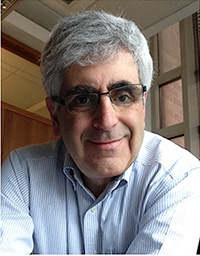 arterial stiffness in HGPS: implications for lifespan.” Dr. Assoian feels their research will investigate why HGPS arteries stiffen prematurely and whether premature arterial stiffening can be prevented, either by pharmacologic treatment or genetic modification of mice. Dr. Richard Assoian received his training at Johns Hopkins University (B.A), the University of Chicago (PhD) and the National Institutes of Health (post-doctoral). He was on the faculties of Columbia University and the University of Miami before moving to the University of Pennsylvania in 1998. He is currently Professor of Pharmacology in the Department of Systems Pharmacology and Translational Therapeutics in the School of Medicine. Dr. Assoian’s lab studies how changes in the stiffness of the arterial extracellular matrix affects the function of arterial smooth muscle cells. In this current study, his lab will use a Progeria mouse model to study the basis of and consequence of premature arterial stiffening in HGPS.
arterial stiffness in HGPS: implications for lifespan.” Dr. Assoian feels their research will investigate why HGPS arteries stiffen prematurely and whether premature arterial stiffening can be prevented, either by pharmacologic treatment or genetic modification of mice. Dr. Richard Assoian received his training at Johns Hopkins University (B.A), the University of Chicago (PhD) and the National Institutes of Health (post-doctoral). He was on the faculties of Columbia University and the University of Miami before moving to the University of Pennsylvania in 1998. He is currently Professor of Pharmacology in the Department of Systems Pharmacology and Translational Therapeutics in the School of Medicine. Dr. Assoian’s lab studies how changes in the stiffness of the arterial extracellular matrix affects the function of arterial smooth muscle cells. In this current study, his lab will use a Progeria mouse model to study the basis of and consequence of premature arterial stiffening in HGPS.
Dr. Finkel is trying to understand why HGPS is a segmental progeria, namely, why it seems to effect certain tissues more than other tissues. He is particularly interested in why problems with blood vessels arise. It is believed that this segmental nature of the disease might be because the cell that helps make up blood vessels, the vascular smooth muscle cell, might respond slightly differently to progerin expression than other cell types. This difference has to do with another protein called p62, which is involved in the cellular process of autophagy. He believes that p62 behaves differently in smooth muscle cells compared to other cells (in smooth muscle cells it appears to localize in the cell nucleus) and that these differences might explain why the blood vessels have so many problems in HGPS. He also believes that medicine can be developed that effects p62 and that these drugs might be useful to treat HGPS patients.
Toren Finkel is the Director of the Aging Institute at the University of Pittsburgh/UPMC and the G. Nicholas Beckwith III and Dorothy B. Beckwith Chair in Translational Medicine at the University of Pittsburgh Department of Medicine. He received his undergraduate degree in Physics and his MD and PhD degree from Harvard Medical School in 1986. Following a residency in Internal Medicine at the Massachusetts General Hospital, he completed a fellowship in Cardiology at Johns Hopkins Medical School. In 1992, he came to the NIH as an Investigator within the Intramural Research Program of the National Heart, Lung and Blood Institute (NHLBI). During his time at the NIH, he held various positions including Chief of the Cardiology Branch and Chief of the Center for Molecular Medicine within the NHLBI. He is a member of the American Society for Clinical Research (ASCR), the Association of American Physicians (AAP) and a Fellow of the American Association for the Advancement of Science (AAAS). He serves on numerous editorial boards including currently serving on the Board of Reviewing Editors for Science. Although NIH Intramural Funds have primarily supported his work, his laboratory has received support as a Senior Scholar of the Ellison Medical Foundation and by the Leducq Foundation, where he currently serves as the US coordinator for a Transatlantic Network studying cardiac regeneration. His current research interests include the role of autophagy, reactive oxygen species and mitochondrial function in aging and age-related diseases.
 Cardiovascular alterations are the leading cause of death among Progeria patients. Dr. Izpisua Belmonte’s laboratory has demonstrated that cellular reprogramming can rejuvenate cells from Progeria. His laboratory is now using cellular reprogramming to ameliorate aging phenotypes in mouse models of Progeria with special focus on the cardiovascular system. These discoveries could lead to the development of novel treatments for Progeria patients.
Cardiovascular alterations are the leading cause of death among Progeria patients. Dr. Izpisua Belmonte’s laboratory has demonstrated that cellular reprogramming can rejuvenate cells from Progeria. His laboratory is now using cellular reprogramming to ameliorate aging phenotypes in mouse models of Progeria with special focus on the cardiovascular system. These discoveries could lead to the development of novel treatments for Progeria patients.
Dr. Izpisua Belmonte’s area of research is focused on the understanding of stem cell biology, organ and tissue development and regeneration. He has published over 350 articles in high profile, internationally recognized, peer-reviewed journals and book chapters. He has received several notable honors and awards, including the William Clinton Presidential Award, the Pew Scholar Award, the National Science Foundation Creativity Award, the American Heart Association Established Investigator Award, and the Roger Guillemin Nobel Chair for his endeavors in these fields. Through the years his work has contributed to uncovering the role of some homeobox genes during organ and tissue patterning and specification, as well as the identification of the molecular mechanisms that determine how the different cell type precursors of internal organs are organized spatially along the embryonic left right axis. His work is contributing to give us a glimpse into the molecular basis implicated during organ regeneration in higher vertebrates, the differentiation of human stem cells into various tissues as well as aging and aging related diseases. The ultimate goal of his research is the development of new molecules and specific gene and cell based treatments to cure diseases affecting mankind.
December 2016 (start date February 1, 2017): To Ricardo Villa-Bellosta, PhD, Team Leader, Fundación Jiménez Díaz University Hospital Health Research Institute (FIIS-FJD, Spain). “Therapeutic strategies to recover the normal pyrophosphate homeostasis in HGPS.”
 Like HGPS patients, LmnaG609G/+ mice exhibit excessive vascular calcification due to impaired capacity of the body to synthesize extracellular pyrophosphate (PPi). Because an imbalance between degradation and synthesis of extracellular PPi can also lead to pathological calcification of articular cartilage and other soft tissues, the systemic decrease in circulating PPi associated with progerin expression could explain several HGPS clinical manifestations, including vascular calcification, bone and joint abnormalities. Treatment with exogenous PPi reduced vascular calcification but did not increase the life span of LmnaG609G/G609G mice. It is due to the rapid hydrolysis of exogenous PPi to the basal serum level, which reduce the time of action of PPi to prevent ectopic calcification in other soft tissues such as joints. Restoring the correct PPi homeostasis in LmnaG609G/+mice using pharmacological inhibitors of the enzymes involved in extracellular pyrophosphate metabolism, could improve both quality of life and life span.
Like HGPS patients, LmnaG609G/+ mice exhibit excessive vascular calcification due to impaired capacity of the body to synthesize extracellular pyrophosphate (PPi). Because an imbalance between degradation and synthesis of extracellular PPi can also lead to pathological calcification of articular cartilage and other soft tissues, the systemic decrease in circulating PPi associated with progerin expression could explain several HGPS clinical manifestations, including vascular calcification, bone and joint abnormalities. Treatment with exogenous PPi reduced vascular calcification but did not increase the life span of LmnaG609G/G609G mice. It is due to the rapid hydrolysis of exogenous PPi to the basal serum level, which reduce the time of action of PPi to prevent ectopic calcification in other soft tissues such as joints. Restoring the correct PPi homeostasis in LmnaG609G/+mice using pharmacological inhibitors of the enzymes involved in extracellular pyrophosphate metabolism, could improve both quality of life and life span.
Ricardo Villa-Bellosta obtained his PhD degree in 2010 from the Zaragoza University (Spain). His doctoral work was focused on the role of phosphate transporters in vascular calcification, renal physiology and toxicokinetics of arsenic. For his work he has received several awards including the Extraordinary Doctoral Award, the Spanish Royal Academy of Doctors Award and the Enrique Coris Research Award. He was a visiting researcher at the Emory University School of Medicine in Atlanta (USA) where he studied the extracellular pyrophosphate (ePPi) metabolism in the aortic wall. In 2012 he joined the Centro Nacional de Investigaciones Cardiovasculares (CNIC, Spain) as a Juan de la Cierva postdoctoral researcher focusing his work on the ePPi metabolism both in atheroma plaque calcification and in vascular calcification in HGPS mice. In 2015 he moved to the Fundación Jiménez Díaz University Hospital Health Research Institute (FIIS-FJD, Spain) to study the phosphate/pyrophosphate homeostasis in hemodialysis patients as a Sara Borrell postdoctoral researcher. In September 2015 he was granted with an “I+D+I Young Researchers” fellowship as a Team Leader in the FIIS-FJD to study the role of ePPi metabolism on vascular calcification in chronic kidney disease and diabetes.
 The causative mutation of HGPS affects lamin A. AKTIP, a protein that we recently characterized, is is a lamin-interacting factor essential for cell survival, implicated in telomere and DNA metabolism. Four main observations link this new protein to HGPS: i) AKTIP impairment recapitulates HGPS characteristics in cells; ii) AKTIP impairment recapitulates HGPS characteristics in mice; iii) AKTIP interacts with lamins, and iv) AKTIP is altered in patient-derived HGPS cells. In our studies we postulate the hypothesis that an AKTIP complex acts as a checkpoint for challenging DNA replicative events. We expect that in HGPS this checkpoint is compromised, which, in turn, may contribute to the HGPS phenotype. We propose to extensively analyze AKTIP function in vitro and in mice. We expect that this research will give new insights into the connection between progerin and telomere dysfunction through AKTIP, along with information on the role of DNA replication impairment as a potential driver mechanism in progeria. Given that the knowledge of the determinants and driver mechanisms of HGPS etiology has not yet been fully acquired, we believe that studies on new lamin-interacting players, such as AKTIP, will be instrumental to dissect the mechanistic bases of HGPS and to open the path to novel therapeutic strategies.
The causative mutation of HGPS affects lamin A. AKTIP, a protein that we recently characterized, is is a lamin-interacting factor essential for cell survival, implicated in telomere and DNA metabolism. Four main observations link this new protein to HGPS: i) AKTIP impairment recapitulates HGPS characteristics in cells; ii) AKTIP impairment recapitulates HGPS characteristics in mice; iii) AKTIP interacts with lamins, and iv) AKTIP is altered in patient-derived HGPS cells. In our studies we postulate the hypothesis that an AKTIP complex acts as a checkpoint for challenging DNA replicative events. We expect that in HGPS this checkpoint is compromised, which, in turn, may contribute to the HGPS phenotype. We propose to extensively analyze AKTIP function in vitro and in mice. We expect that this research will give new insights into the connection between progerin and telomere dysfunction through AKTIP, along with information on the role of DNA replication impairment as a potential driver mechanism in progeria. Given that the knowledge of the determinants and driver mechanisms of HGPS etiology has not yet been fully acquired, we believe that studies on new lamin-interacting players, such as AKTIP, will be instrumental to dissect the mechanistic bases of HGPS and to open the path to novel therapeutic strategies.
Isabella Saggio received her PhD in Genetics at Sapienza University (Rome, Italy). She worked in the Merck Research Institute for Molecular Biology (Rome Italy) from 1991 to 1994. From 1994 to 1997 she was EU postdoctoral fellow at IGR (Paris France). In 1998 she came back to Sapienza University, at first as a research assistant and then as an associate professor of Genetics and Gene Therapy. I.S. main research interests are gene therapy along with studies on telomeres and aging. I.S. has been member of the San Raffaele Science Park from 2003 to 2011, is part of CNR since 2003, of the Italian Network for Laminopathies since 2016. I.S. is the Sapienza representative in the Interuniversity Biotechnology Network in Italy, coordinates international activities at Sapienza and founded in 2016 a Master of Scientific Journalism to improve the relationships between researchers and public (www.mastersgp.it). I.S. activities are described on the site: www.saggiolab.com.
.jpg) Our goal is to test new potential progeria therapeutic agents in vivo. This highly collaborative project is based on the discovery in the laboratory of Tom Misteli of several candidate therapeutic agents, the development of a HGPS animal model in the laboratory of Carlos Lopez-Otin and the expertise of Alicia Rodriguez-Folgueras in testing of diverse compounds in an in-vivo setting.
Our goal is to test new potential progeria therapeutic agents in vivo. This highly collaborative project is based on the discovery in the laboratory of Tom Misteli of several candidate therapeutic agents, the development of a HGPS animal model in the laboratory of Carlos Lopez-Otin and the expertise of Alicia Rodriguez-Folgueras in testing of diverse compounds in an in-vivo setting.
Tom Misteli is an NIH Distinguished Investigator and the Director of the Center for Cancer Research at the National Cancer Institute, NIH. He is an internationally renowned cell biologist who pioneered the use of imaging approaches to study genomes and gene expression in living cells. His laboratory’s interest is to uncover the fundamental principles of 3D genome organization and function and to apply this knowledge to the development of novel diagnostic and therapeutic strategies for cancer and aging. He obtained his PHD from the University of London, UK and performed post-doctoral training at the Cold Spring Harbor Laboratory. For his work he has received numerous awards including the Herman Beerman Award, the Wilhelm Bernhard Medal, the Gold Medal of the Charles University, the Flemming Award, the Gian-Tondury Prize, the NIH Director’s Award, and an NIH Merit Award. He acts as an advisor for numerous national and international agencies and serves on several editorial boards including Cell, Science and PLoS Biology. He is the Editor-in-Chief of Current Opinion in Cell Biology.
 In this project we propose the development of new isoprenylcysteine carboxylmethyltransferase (ICMT) inhibitors for the treatment of the Hutchinson-Gilford Progeria Syndrome (HGPS, or progeria) based on a hit previously identified in our research laboratory. This hit (UCM-13239) inhibits ICMT in a significant manner, induces mislocalization of progerin protein in progeroid fibroblasts (LmnaG609G/G609G), increases viability of these cells and promotes pro-survival signaling pathways in the treated cells. Using this compound as a starting point, our team will carry out a medicinal chemistry program (hit to lead and lead optimization) aimed at obtaining improved compounds in terms of biological activity and pharmacokinetic parameters. The optimal compound(s) will be assessed for efficacy in an in vivo model of progeria.
In this project we propose the development of new isoprenylcysteine carboxylmethyltransferase (ICMT) inhibitors for the treatment of the Hutchinson-Gilford Progeria Syndrome (HGPS, or progeria) based on a hit previously identified in our research laboratory. This hit (UCM-13239) inhibits ICMT in a significant manner, induces mislocalization of progerin protein in progeroid fibroblasts (LmnaG609G/G609G), increases viability of these cells and promotes pro-survival signaling pathways in the treated cells. Using this compound as a starting point, our team will carry out a medicinal chemistry program (hit to lead and lead optimization) aimed at obtaining improved compounds in terms of biological activity and pharmacokinetic parameters. The optimal compound(s) will be assessed for efficacy in an in vivo model of progeria.
Silvia Ortega-Gutiérrez obtained her PhD degree in Complutense University, in Madrid, working under the supervision of Prof. María Luz López-Rodríguez in the field of Medicinal Chemistry. After that, she joined Prof. Ben Cravatt’s lab at The Scripps Research Institute (California, USA) to work in the field of Chemical Biology and Proteomics with a Fulbright Fellowship. Between 2008 and 2012 she was Ramón y Cajal Scholar in the Organic Chemistry Department at Complutense University where she was promoted to Associate Professor in 2013. This is the position that she currently holds.
Dr. Ortega-Gutiérrez’ areas of interest are medicinal chemistry and chemical biology and, in particular, the fields of the endogenous cannabinoid and lysophosphatidic acid systems, the validation of new therapeutic targets, and the development of chemical probes for the study of G protein-coupled receptors. Her work has been published in prestigious journals including Science, Nature Neuroscience, Angewandte Chemie and the Journal of Medicinal Chemistry, and also in patents that have been transferred to the pharmaceutical industry. In 2011 and in 2016 she received the “Runner-up Prize for a Young Medicinal Chemist in Academia” by the European Federation of Medicinal Chemistry and in 2012 the “Young Researcher Award” by the Spanish Royal Chemical Society.
 Hutchinson-Gilford progeria syndrome (HGPS) is a rare genetic disease, caused by mutation in the LMNA gene and characterized by severe symptoms resembling features of premature aging, including cardiovascular disease that leads to atherosclerosis, hypertension, heart hypertrophy and death due to heart failure. Previous studies in patients and HGPS mouse models revealed progressive loss of smooth muscle cells in blood vessels, but the role of endothelial cells in the development of HGPS-linked cardiovascular disease has not been analyzed yet, despite the fact that impaired endothelial cell function is a major risk factor for cardiovascular disease in normal aging. In order to study the molecular basis of the cardiovascular aging pathology and to investigate how the aged vascular endothelium contributes to HGPS, we generated a novel mouse model expressing the HGPS-causing LMNA mutant gene product selectively in the vascular endothelial cell system. Our preliminary analyses of the mice showed retarded growth, increased fibrosis in the heart, cardiac hypertrophy, elevation of hypertrophy markers, and premature death of mutant mice, resembling the HGPS cardiovascular phenotype. In this project we will investigate the molecular mechanisms, how the mutant LMNA gene product affects endothelial cells in blood vessel and how this can affect heart function. We will identify pro-atherogenic components secreted in mutant endothelial cells and vessels and test how this pathway can affect other tissues and cells. This project will also identify potential biomarkers for HGPS-linked cardiovascular disease in blood. Our project for the first time investigates the role of the vascular endothelium in the development of cardiovascular disease in HGPS and will identify new (pro-atherogenic) pathways and components as potential targets for diagnosis and therapy.
Hutchinson-Gilford progeria syndrome (HGPS) is a rare genetic disease, caused by mutation in the LMNA gene and characterized by severe symptoms resembling features of premature aging, including cardiovascular disease that leads to atherosclerosis, hypertension, heart hypertrophy and death due to heart failure. Previous studies in patients and HGPS mouse models revealed progressive loss of smooth muscle cells in blood vessels, but the role of endothelial cells in the development of HGPS-linked cardiovascular disease has not been analyzed yet, despite the fact that impaired endothelial cell function is a major risk factor for cardiovascular disease in normal aging. In order to study the molecular basis of the cardiovascular aging pathology and to investigate how the aged vascular endothelium contributes to HGPS, we generated a novel mouse model expressing the HGPS-causing LMNA mutant gene product selectively in the vascular endothelial cell system. Our preliminary analyses of the mice showed retarded growth, increased fibrosis in the heart, cardiac hypertrophy, elevation of hypertrophy markers, and premature death of mutant mice, resembling the HGPS cardiovascular phenotype. In this project we will investigate the molecular mechanisms, how the mutant LMNA gene product affects endothelial cells in blood vessel and how this can affect heart function. We will identify pro-atherogenic components secreted in mutant endothelial cells and vessels and test how this pathway can affect other tissues and cells. This project will also identify potential biomarkers for HGPS-linked cardiovascular disease in blood. Our project for the first time investigates the role of the vascular endothelium in the development of cardiovascular disease in HGPS and will identify new (pro-atherogenic) pathways and components as potential targets for diagnosis and therapy.
Roland Foisner is University Professor of Biochemistry at the Medical University Vienna and Deputy Director at the Max F. Perutz Laboratories. He received his PhD (Dr. techn.) in Biotechnology at the Technical University Vienna, Austria, in 1984, was Assistant and then Associate Professor at the University of Vienna, and was appointed Full Professor at the Department of Medical Biochemistry of the Medical University Vienna in 2002. 1991‐1992 he received post‐doctoral training at the Scripps Research Institute in La Jolla, California, USA.
Roland Foisner was the scientific coordinator of EURO‐Laminopathies, a European network project of clinical and basic researchers, aiming at the analyses of molecular mechanisms of lamin‐linked diseases for the development of new therapeutic approaches. He is Editor‐in‐ Chief of the Journal Nucleus, serves on the Editorial Board of several Cell Biology Journals, in the scientific advisory board of EU projects, and in review panels of several international funding organizations. He was Dean of graduate studies in the International Vienna Biocenter PhD program until 2007 and has served in many national and international thesis committees.
Research in Roland Foisner’s lab focuses on the dynamics and functions of lamins and lamin binding proteins in nuclear and chromatin organization, in the regulation of gene expression and signaling, and in genetic diseases ranging from muscular dystrophies to premature aging. He has published numerous important peer‐reviewed papers, invited reviews and book chapters, and has given numerous invited seminars at national and international meetings.
 Cardiovascular alterations are the leading cause of death among Progeria patients. Dr. Belmonte’s laboratory has developed novel models for the study of Progeria based on the use of induced pluripotent stem cells (iPSCs) generated from Progeria patients. His laboratory is now using vascular cells produced from these models for the discovery of novel drugs that can ameliorate cardiovascular alterations in human and mouse models of Progeria. These discoveries could lead to the development of novel treatments for Progeria patients.
Cardiovascular alterations are the leading cause of death among Progeria patients. Dr. Belmonte’s laboratory has developed novel models for the study of Progeria based on the use of induced pluripotent stem cells (iPSCs) generated from Progeria patients. His laboratory is now using vascular cells produced from these models for the discovery of novel drugs that can ameliorate cardiovascular alterations in human and mouse models of Progeria. These discoveries could lead to the development of novel treatments for Progeria patients.
Dr. Juan Carlos Belmonte Izpisua is a Professor at the Gene Expression Laboratories at The Salk Institute for Biological Studies, La Jolla, CA, USA. He is the former director and assisted in establishing the Center for Regenerative Medicine in Barcelona. He has a Ph.D. in Biochemistry and Pharmacology from The University of Bologna, Italy and from the University of Valencia, Spain. He is a postdoctoral fellow from the University of Marburg’ European Molecular Biology Laboratory (EMBL), in Heidelberg, Germany and UCLA, USA.
 A recent study by others [Gabriel et al., 2015, Aging Cell 14(1):78-91] showed that the isothiocyanate sulforaphane (a phytochemical from broccoli), enhanced the growth rate of cultured cells derived from children with Progeria, and it increased a variety of biomarkers associated with the syndrome. Our work with isothiocyanates from edible plants suggests that some of these hundred-plus closely related compounds should have wider therapeutic windows (the range between effective, and toxic concentration), and perhaps lower effective concentrations than sulforaphane. We will test this hypothesis.
A recent study by others [Gabriel et al., 2015, Aging Cell 14(1):78-91] showed that the isothiocyanate sulforaphane (a phytochemical from broccoli), enhanced the growth rate of cultured cells derived from children with Progeria, and it increased a variety of biomarkers associated with the syndrome. Our work with isothiocyanates from edible plants suggests that some of these hundred-plus closely related compounds should have wider therapeutic windows (the range between effective, and toxic concentration), and perhaps lower effective concentrations than sulforaphane. We will test this hypothesis.
.jpg) We recently found novel chemicals that block the interaction between progerin and Lamin A/C through chemical library screening. In progerin-producing mouse model (LmnaG609G/G609G), our chemical (JH4) can extend life span as well as ameliorate aging phenotypes including gain of body weight, increase muscle strength and organ size. Despite obvious effect of JH4 on Lmnawt/G609Gmice, it can extend only 4 weeks of LmnaG609G/G609G mice life span, indicating that JH4 effect is not enough for applying as therapeutic drug for progeria syndrome at present stage. In addition, improvement of JH4 effect should be performed. For this, we will carry several trials for improvement of JH4 effect. First, we will modify our chemicals more hydrophilic form. In fact, JH4 is very hydrophobic that would be one of reason we cannot increase dosage. Concerning this, we already obtained hydrophilic compound (JH010), with similar cellular effect of JH4. Indeed, our recent result showed that increase of JH4 (from 10 mg/kg to 20 mg/kg) could increase life span from 16 week (carrier-treated) over to 24 weeks (actually, 20 mg/kg-injected mice were still alive). To improve this chemical, we generated JH010-derivetives and checked the biological effect. Second, we will make nanoparticle that will deliver JH010 more effectively to whole body. In fact, this work has been already started. Through both methods, we will obtain improved JH4-related chemicals and will test them in LmnaG609G/G609G mouse model (life span, histological analysis, toxicity, Pharmacodynamics as well as Pharmaco-Kinetics). From these studies, we wish to provide the best way to treatment of HGPS in mouse model as well as HGPS children.
We recently found novel chemicals that block the interaction between progerin and Lamin A/C through chemical library screening. In progerin-producing mouse model (LmnaG609G/G609G), our chemical (JH4) can extend life span as well as ameliorate aging phenotypes including gain of body weight, increase muscle strength and organ size. Despite obvious effect of JH4 on Lmnawt/G609Gmice, it can extend only 4 weeks of LmnaG609G/G609G mice life span, indicating that JH4 effect is not enough for applying as therapeutic drug for progeria syndrome at present stage. In addition, improvement of JH4 effect should be performed. For this, we will carry several trials for improvement of JH4 effect. First, we will modify our chemicals more hydrophilic form. In fact, JH4 is very hydrophobic that would be one of reason we cannot increase dosage. Concerning this, we already obtained hydrophilic compound (JH010), with similar cellular effect of JH4. Indeed, our recent result showed that increase of JH4 (from 10 mg/kg to 20 mg/kg) could increase life span from 16 week (carrier-treated) over to 24 weeks (actually, 20 mg/kg-injected mice were still alive). To improve this chemical, we generated JH010-derivetives and checked the biological effect. Second, we will make nanoparticle that will deliver JH010 more effectively to whole body. In fact, this work has been already started. Through both methods, we will obtain improved JH4-related chemicals and will test them in LmnaG609G/G609G mouse model (life span, histological analysis, toxicity, Pharmacodynamics as well as Pharmaco-Kinetics). From these studies, we wish to provide the best way to treatment of HGPS in mouse model as well as HGPS children.
Dr. Park received his PhD in Cancer Biology at Korea University. He carried out his post-doctoral research in the Korea National Institute of Health (KNIH) and in Seoul National University. Since 2006, he has worked at Pusan National University. Now he is the Chairperson of the Department of Molecular Biology. His research focuses on identification of the disease specific signaling network (Cancer, HGPS, Werner syndrome) and finding novel chemicals that can block the disease related protein-protein interaction for drug candidates.
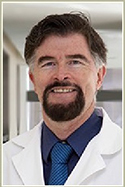 In children with progeria, the blood vessels age very quickly. This causes vascular disease that leads to heart attack and stroke. We intend to develop a therapy that reverses vascular aging in these children. We have previously shown that aged human cells can be rejuvenated by treating them with modified message RNA (mmRNA) encoding telomerase. Telomerase is a protein that extends telomeres on chromosomes.
In children with progeria, the blood vessels age very quickly. This causes vascular disease that leads to heart attack and stroke. We intend to develop a therapy that reverses vascular aging in these children. We have previously shown that aged human cells can be rejuvenated by treating them with modified message RNA (mmRNA) encoding telomerase. Telomerase is a protein that extends telomeres on chromosomes.
The telomeres are like the tip of a shoelace; they hold the chromosome together, and telomeres are necessary for normal functioning of the chromosomes. As cells age, the telomeres get shorter, and at some point the chromosome no longer functions properly. At this point the cell becomes senescent and can no longer proliferate. Telomeres are essentially our biological clock. In children with progeria, the telomeres shorten more quickly. We intend to test our therapy on cells from Progeria children to see if we can extend the telomeres, reverse the aging process, and rejuvenate the vascular cells. If this approach works, we intend to develop the therapy toward clinical trials in these children.
Dr. John P. Cooke trained in cardiovascular medicine and obtained a PhD in physiology at the Mayo Clinic. He was recruited to Harvard Medical School as an assistant professor of medicine. In 1990, he was recruited to Stanford University to spearhead the program in vascular biology and medicine, and was appointed Professor in the Division of Cardiovascular Medicine at Stanford University School of Medicine, and Associate Director of the Stanford Cardiovascular Institute until his recruitment to Houston Methodist in 2013.
Dr. Cooke has published over 500 research papers, position papers, reviews, book chapters and patents in the arena of vascular medicine and biology with over 20,000 citations; h index = 76 (ISI Web of Knowledge, 6-2-13). He serves on national and international committees that deal with cardiovascular diseases, including the American Heart Association, American College of Cardiology, Society for Vascular Medicine, and the National Heart, Lung and Blood Institute. He has served as President of the Society for Vascular Medicine, as a Director of the American Board of Vascular Medicine, and as an Associate Editor of Vascular Medicine.
Dr. Cooke’s translational research program is focused on vascular regeneration. The program is funded by grants from the National Institutes of Health, the American Heart Association, and the industry.
The focus of Dr. Cooke’s research program is on restoration or stimulation of endothelial functions such as vasodilation and angiogenesis, using small molecules or stem cell therapies. In his 25 years of translational endothelial biology, he first described and characterized the anti-atherogenic effects of endothelium-derived nitric oxide; the anti-angiogenic effect of the NO synthase inhibitor ADMA; the angiogenic pathway mediated by endothelial nicotinic acetylcholine receptors; the role for this pathway in states of pathological angiogenesis; and developed an antagonist of the pathway that is now in Phase II clinical trials. His clinical research group has explored the use of angiogenic agents and adult stem cells in the treatment of peripheral arterial disease. More recently, he has generated and characterized endothelial cells derived from human iPSCs, and explored their role in angiogenesis and vascular regeneration. Recent insights from the laboratory have clarified the role of innate immune signaling in nuclear reprogramming to pluripotency and therapeutic transdifferentiation for vascular disease.
.jpg) Dr. Collins oversees the work of the world’s largest supporter of biomedical research, from basic to clinical research. Dr. Collins and his team, together with The Progeria Research Foundation, co-discovered the genetic cause of HGPS in 2003, and with over a dozen years invested in this work, their aim remains: to understand pathogenesis and seek treatments for HGPS. Current studies are focused on potential therapeutic approaches, including RNA-based methods and the use of rapamycin and its analogs, using both cellular and HGPS mouse models.
Dr. Collins oversees the work of the world’s largest supporter of biomedical research, from basic to clinical research. Dr. Collins and his team, together with The Progeria Research Foundation, co-discovered the genetic cause of HGPS in 2003, and with over a dozen years invested in this work, their aim remains: to understand pathogenesis and seek treatments for HGPS. Current studies are focused on potential therapeutic approaches, including RNA-based methods and the use of rapamycin and its analogs, using both cellular and HGPS mouse models.
Francis S. Collins, M.D., Ph.D. is the Director of the National Institutes of Health (NIH). In that role he oversees the work of the largest supporter of biomedical research in the world, spanning the spectrum from basic to clinical research.
Dr. Collins is a physician-geneticist noted for his landmark discoveries of disease genes and his leadership of the international Human Genome Project, which culminated in April 2003 with the completion of a finished sequence of the human DNA instruction book. He served as director of the National Human Genome Research Institute at the NIH from 1993-2008.
Dr. Collins’ own research laboratory has discovered a number of important genes, including those responsible for cystic fibrosis, neurofibromatosis, Huntington’s disease, a familial endocrine cancer syndrome, and most recently, genes for type 2 diabetes, and the gene that causes Hutchinson-Gilford progeria syndrome, a rare condition that causes premature aging.
Dr. Collins received a B.S. in chemistry from the University of Virginia, a Ph.D. in physical chemistry from Yale University, and an M.D. with honors from the University of North Carolina at Chapel Hill. Prior to coming to the NIH in 1993, he spent nine years on the faculty of the University of Michigan, where he was a Howard Hughes Medical Institute investigator. He is an elected member of the Institute of Medicine and the National Academy of Sciences. Dr. Collins was awarded the Presidential Medal of Freedom in November 2007 and the National Medal of Science in 2009.
 Hutchinson-Gilford Progeria Syndrome (HGPS) is a rare, fatal genetic disorder characterized by rapid aging. Treatment of human HGPS fibroblasts or mice lacking Lmna (a mouse model of HGPS) with rapamycin, an inhibitor of the mTOR (mechanistic Target Of Rapamycin) protein kinase, reverses HGPS phenotypes at the cellular level, and promotes lifespan and health at the organismal level. However, rapamycin has serious side effects in humans, including immunosuppression and diabetogenic metabolic effects, which may preclude its long-term use for HGPS patients. The mTOR protein kinase is found in two distinct complexes, and the work of Dr. Lamming’s research team and work of many other laboratories suggest that many of the benefits of rapamycin benefits are derived from suppression of mTOR complex 1 (mTORC1), while many of the side effects are due to “off-target” inhibition of mTOR complex 2 (mTORC2).
Hutchinson-Gilford Progeria Syndrome (HGPS) is a rare, fatal genetic disorder characterized by rapid aging. Treatment of human HGPS fibroblasts or mice lacking Lmna (a mouse model of HGPS) with rapamycin, an inhibitor of the mTOR (mechanistic Target Of Rapamycin) protein kinase, reverses HGPS phenotypes at the cellular level, and promotes lifespan and health at the organismal level. However, rapamycin has serious side effects in humans, including immunosuppression and diabetogenic metabolic effects, which may preclude its long-term use for HGPS patients. The mTOR protein kinase is found in two distinct complexes, and the work of Dr. Lamming’s research team and work of many other laboratories suggest that many of the benefits of rapamycin benefits are derived from suppression of mTOR complex 1 (mTORC1), while many of the side effects are due to “off-target” inhibition of mTOR complex 2 (mTORC2).
While rapamycin inhibits both mTOR complexes in vivo, mTORC1 and mTORC2 are naturally responsive to different environmental and nutrient cues. mTORC1 is directly stimulated by amino acids, while mTORC2 is predominately regulated by insulin and growth-factor signaling. Dr. Lamming’s research team have determined that a low protein diet significantly reduces mTORC1, but not mTORC2, signaling in mouse tissues. This raises the intriguing possibility that a low-protein diet may be a relatively simple, low side-effect method to restrain mTORC1 activity and provide therapeutic benefit to HGPS patients. In this study, they will identify a diet that inhibits mTORC1 signaling in vivo, and determine the ability of this diet to rescue HGPS pathology both in vivo in a progerin-expressing mouse model of HGPS, and in vitro in human HGPS patient cell lines.
Dudley Lamming received his PhD in Experimental Pathology from Harvard University in 2008 in the laboratory of Dr. David Sinclair, and subsequently completed postdoctoral training at the Whitehead Institute for Biomedical Research in Cambridge, MA in the laboratory of Dr. David Sabatini. Dr. Lamming’s research is supported in part by a NIH/NIA K99/R00 Pathway to Independence Award as well as a Junior Faculty Research Award from the American Federation for Aging Research. His laboratory at the University of Wisconsin is focused on learning how nutrient-responsive signaling pathways can be harnessed to promote health and delay both normal aging as well as diseases of premature aging such as Hutchinson-Gilford Progeria Syndrome.
.jpg) Hutchinson-Gilford progeria syndrome (HGPS) is an extremely rare genetic disease characterized by premature and accelerated aging, and premature death. The discovery of new therapeutic compounds is of utmost importance for this fatal disease. The endogenous molecule neuropeptide Y (NPY) activates NPY receptors that are localized in various organs and cells affected by HGPS. Our preliminary data and recent publications strongly suggest that neuropeptide Y (NPY) system might be a putative therapeutic target for HGPS.
Hutchinson-Gilford progeria syndrome (HGPS) is an extremely rare genetic disease characterized by premature and accelerated aging, and premature death. The discovery of new therapeutic compounds is of utmost importance for this fatal disease. The endogenous molecule neuropeptide Y (NPY) activates NPY receptors that are localized in various organs and cells affected by HGPS. Our preliminary data and recent publications strongly suggest that neuropeptide Y (NPY) system might be a putative therapeutic target for HGPS.
In this study we will investigate the beneficial effects of NPY and/or activators of NPY receptors in rescuing the aging phenotype in two HGPS models: in cell based and mouse model of HGPS. With this project we expect to show that NPY system activation is an innovative strategy for the therapeutics, or co-therapeutics, of HGPS.
Cláudia Cavadas holds a PhD in Pharmacology from the Faculty of Pharmacy, University of Coimbra. She is Group Leader of “Neuroendocrinology and Aging group” at CNC – Center for Neuroscience and Cell Biology, University of Coimbra. Cláudia Cavadas is co-author of 50 publications and has been investigating the Neuropeptide Y (NPY) system since 1998. She is the vice-president of the Portuguese Society of Pharmacology (since 2013); Cláudia Cavadas was the former Director of the Institute for Interdisciplinary Research of the University of Coimbra (2010-2012).
 Hutchinson-Gilford progeria syndrome (HGPS), a lethal genetic disorder, is characterized by premature accelerated aging. HGPS is most commonly caused by a de novo point mutation (G608G) within the lamin A/C gene (LMNA), producing an abnormal lamin A protein termed progerin. Accumulation of progerin causes nuclear abnormalities, and cell cycle arrest, ultimately leading to cellular senescence, and therefore, is one of the mechanisms underlying the progression of HGPS. It has been shown that rapamycin, by stimulating autophagy, promotes clearance of progerin and has beneficial effects on HGPS models. Since rapamycin has well-known adverse effects, the identification of safer stimulators of autophagy, with other beneficial effects, for chronic treatment of HGPS patients is of utmost importance.
Hutchinson-Gilford progeria syndrome (HGPS), a lethal genetic disorder, is characterized by premature accelerated aging. HGPS is most commonly caused by a de novo point mutation (G608G) within the lamin A/C gene (LMNA), producing an abnormal lamin A protein termed progerin. Accumulation of progerin causes nuclear abnormalities, and cell cycle arrest, ultimately leading to cellular senescence, and therefore, is one of the mechanisms underlying the progression of HGPS. It has been shown that rapamycin, by stimulating autophagy, promotes clearance of progerin and has beneficial effects on HGPS models. Since rapamycin has well-known adverse effects, the identification of safer stimulators of autophagy, with other beneficial effects, for chronic treatment of HGPS patients is of utmost importance.
Ghrelin is a circulating peptide hormone, and is the endogenous ligand for growth hormone secretagogue receptor, having, therefore, growth hormone-releasing activity. Apart from its well-known orexigenic effect, ghrelin has beneficial roles in different organs and systems, such as cardiovascular protective effect, atherosclerosis regulation, protection from ischemia/reperfusion injury as well as improving the prognosis of myocardial infarction and heart failure. Moreover, ghrelin and ghrelin analogues have been tested in some clinical trials for the treatment of diseases such as cachexia in chronic heart failure, frailty in elderly, and growth hormone deficiency-related disorders, and therefore, can be considered as a safe therapeutic strategy. Additionally, our very recent data show that ghrelin stimulates autophagy and promotes progerin clearance in HGPS cells. In this study we will investigate the potential of ghrelin and ghrelin receptor agonist as treatment for HGPS. Toward this end, we will evaluate whether peripheral administration of ghrelin/ghrelin receptor agonist can ameliorate HGPS phenotype and increase lifespan, using the LmnaG609G/G609G mice, a HGPS mouse model. In addition, we will also determine whether ghrelin reverses HGPS senescent cellular phenotype by promoting progerin clearance through autophagy, a mechanism by which cells clear unnecessary or dysfunctional proteins and organelles to maintain cell homeostasis.
Célia Aveleira received her PhD in Biomedical Sciences from University of Coimbra, Portugal, in 2010. She performed her thesis studies at the Centre of Ophthalmology and Vision Sciences, Faculty of Medicine, University of Coimbra, Portugal and Department of Cellular and Molecular Physiology, Penn State College of Medicine, Penn State University, Hershey, Pennsylvania, USA. After that, she joined Cláudia Cavadas’s research group at the Centre for Neuroscience and Cell Biology, University of Coimbra, Portugal, to conduct her postdoctoral studies. She was granted with a FCT Post-Doc fellowship to study the potential role of neuropeptide Y (NPY) as a mimetic of caloric restriction to reduce aging and ameliorate age-related diseases. In 2013 she assumed her current position at CNC, as an Invited Scientist Research fellow. Her research centers on the role of caloric restriction mimetics as therapeutics targets to delay the aging process of normal and premature aging diseases, such as Hutchinson-Gilford progeria syndrome (HGPS), with particular focus on the homeostatic mechanisms, such as autophagy and tissue regenerative capacity of stem/progenitor cells.
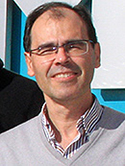 Hutchinson-Gilford progeria syndrome (HGPS) is a rare disorder characterized by premature severe aging and death (median age of 13.4 years). By far, the most common cause of HGPS is a mutation in the gene coding for the protein lamin A that results in the accumulation of progerin, a modified form of lamin A that contains a chemical modification called farnesylation and that is thought to produce the pathology. Hence, scientists are trying to develop therapies that prevent this modification. However, analyzing the results of these experimental therapies is challenging because to date no reliable methods exist to measure the levels of farnesylated progerin in animal models or in HGPS patients. The researchers from CNIC have demonstrated that the levels of the modified protein can be reliably quantified in cultured fibroblasts (a preparation of cells that are obtained from the skin) from mouse and also from HGPS by using a technique called mass spectrometry. In the current project, these researchers are trying to improve the technique to be able to quantify farnesylated progerin directly in blood samples from HGPS patients. If successful the technique would provide scientists with an invaluable tool to evaluate the efficacy of experimental treatments in humans and to monitor the progression and severity of this disease.
Hutchinson-Gilford progeria syndrome (HGPS) is a rare disorder characterized by premature severe aging and death (median age of 13.4 years). By far, the most common cause of HGPS is a mutation in the gene coding for the protein lamin A that results in the accumulation of progerin, a modified form of lamin A that contains a chemical modification called farnesylation and that is thought to produce the pathology. Hence, scientists are trying to develop therapies that prevent this modification. However, analyzing the results of these experimental therapies is challenging because to date no reliable methods exist to measure the levels of farnesylated progerin in animal models or in HGPS patients. The researchers from CNIC have demonstrated that the levels of the modified protein can be reliably quantified in cultured fibroblasts (a preparation of cells that are obtained from the skin) from mouse and also from HGPS by using a technique called mass spectrometry. In the current project, these researchers are trying to improve the technique to be able to quantify farnesylated progerin directly in blood samples from HGPS patients. If successful the technique would provide scientists with an invaluable tool to evaluate the efficacy of experimental treatments in humans and to monitor the progression and severity of this disease.
Dr. Jesús Vázquez graduated in Physical Chemistry at the Universidad Complutense (Madrid, 1982) and carried out his PhD in Biochemistry at the Universidad Autónoma (Madrid, 1986), both with Special Distinction. During his postdoctoral training at Merck Sharp Research Laboratories (NJ, USA) and at the Centro de Biología Molecular Severo Ochoa (Madrid), he specialized in protein chemistry and in the study of biomembranes in the context of neurochemical diseases. Since then, he has played a pioneering role in the development of protein chemistry, mass spectrometry and proteomics in Spain. His laboratory has made relevant contributions to the field addressing subjects such as peptide fragmentation mechanisms, de novo peptide sequencing, and analysis of posttranslational modifications. In the last years he has devoted a considerable effort in the development of second generation techniques, relative proteome quantification by stable isotope labeling, advanced algorithms for quantitative data integration and systems biology, and high-throughput characterization of modifications produced by oxidative stress. These techniques have been applied to several research projects, where he is studying the molecular mechanisms underlying processes such as angiogenesis and nitroxidative stress in endothelium, ischemia-preconditioning in cardiomyocites and mitochondria and the interactome at the immune synapse and in exosomes. Author of more than one hundred international publications, he is Profesor de Investigación of the CSIC and director of the Proteomics Platform of the RIC (Spanish Cardiovascular Research Network). He joined the CNIC as a Full Professor in 2011, where he leads the Cardiovascular Proteomics laboratory and is also in charge of the Proteomics Unit.
 Our goal is to improve our collective understanding of disease development and progression through biomarker identification, with the goal of advancing current treatment and developing and assessing novel therapies for Hutchinson-Gilford Progeria Syndrome (HGPS), and potentially for cardiovascular disease (CVD) in the general population. To date, there is no consistent ability to determine who is at risk of progression or who will respond to therapy. Accurate tests, based on a specific, definable marker or panel of markers are essential in order to standardize clinical guidelines, diagnosis and management. We intend to utilize a state of the art proteomics discovery approach to meet our goal of discovering and validating minimally invasive biomarkers of HGPS and potentially of aging and cardiovascular disease. The insight gained in these studies of HGPS will inform and significantly expand our knowledge of the mechanisms underlying HGPS. The strong potential also exists that the biomarker discoveries made in these studies may ultimately represent potential therapeutic targets for HGPS, CVD and other aging-related disorders.
Our goal is to improve our collective understanding of disease development and progression through biomarker identification, with the goal of advancing current treatment and developing and assessing novel therapies for Hutchinson-Gilford Progeria Syndrome (HGPS), and potentially for cardiovascular disease (CVD) in the general population. To date, there is no consistent ability to determine who is at risk of progression or who will respond to therapy. Accurate tests, based on a specific, definable marker or panel of markers are essential in order to standardize clinical guidelines, diagnosis and management. We intend to utilize a state of the art proteomics discovery approach to meet our goal of discovering and validating minimally invasive biomarkers of HGPS and potentially of aging and cardiovascular disease. The insight gained in these studies of HGPS will inform and significantly expand our knowledge of the mechanisms underlying HGPS. The strong potential also exists that the biomarker discoveries made in these studies may ultimately represent potential therapeutic targets for HGPS, CVD and other aging-related disorders.
Dr. Marsha A. Moses is the Julia Dyckman Andrus Professor at Harvard Medical School and the Director of the Vascular Biology Program at Boston Children’s Hospital. She has had a long-standing interest in identifying and characterizing the biochemical and molecular mechanisms that underlie the regulation of tumor growth and progression. Dr. Moses and her laboratory have discovered a number of angiogenesis inhibitors that function at both the transcriptional and translational level, some of which are in preclinical testing. Named a pioneer in the exciting field of Biomarker Medicine by the Journal of the National Cancer Institute, Dr. Moses established a Proteomics Initiative in her laboratory that has led to the discovery of panels of noninvasive urinary cancer biomarkers that can predict disease status and stage in cancer patients and that are sensitive and accurate markers of disease progression and therapeutic efficacy of cancer drugs. A number of these urine tests have been made commercially available. These diagnostics and therapeutics are included in Dr. Moses’ significant patent portfolio which is composed of both US and foreign patents.
Dr. Moses’ basic and translational work has been published in such journals as Science, the New England Journal of Medicine, Cell and the Journal of Biological Chemistry, among others. Dr. Moses received a Ph.D. in Biochemistry from Boston University and completed a National Institutes of Health postdoctoral fellowship at Boston Children’s Hospital and MIT. She is the recipient of a number of NIH and foundation grants and awards. Dr. Moses has been recognized with both of Harvard Medical School’s mentoring awards, the A. Clifford Barger Mentoring Award (2003) and the Joseph B. Martin Dean’s Leadership Award for the Advancement of Women Faculty (2009). In 2013, she received the Honorary Member Award from the Association of Women Surgeons of the American College of Surgeons. Dr. Moses was elected to the Institute of Medicine of the National Academies of the United States in 2008 and to the National Academy of Inventors in 2013.
 Adeno-associated virus (AAV) is a small, non-disease causing DNA virus that is being used to delivery non-viral genes and other therapeutic DNAs to animals and man. The entire viral genome, except 145 bases on each end, can be removed so that no viral genes are included in the DNA that is packaged within the virus shell (virion). MicroRNAs (miRs) are small pieces of RNA that reduce protein expression by interfering with the corresponding messenger RNA of that protein(s). Research has demonstrated that Lamin A (LMNA) is not expressed at high levels in the brain, and miR-9 expression in the brain is responsible for that suppression. We will package miR-9 in an AAV genome and examine the level of LMNA suppression in human progeria and age matched non-progeria cell lines. In addition, we will package miR-9 and LMNA (that cannot be suppressed by miR-9) in AAV and examine cells for rescue of progeria phenotype. If these steps are successful we will repeat them in a mouse model of Progeria.
Adeno-associated virus (AAV) is a small, non-disease causing DNA virus that is being used to delivery non-viral genes and other therapeutic DNAs to animals and man. The entire viral genome, except 145 bases on each end, can be removed so that no viral genes are included in the DNA that is packaged within the virus shell (virion). MicroRNAs (miRs) are small pieces of RNA that reduce protein expression by interfering with the corresponding messenger RNA of that protein(s). Research has demonstrated that Lamin A (LMNA) is not expressed at high levels in the brain, and miR-9 expression in the brain is responsible for that suppression. We will package miR-9 in an AAV genome and examine the level of LMNA suppression in human progeria and age matched non-progeria cell lines. In addition, we will package miR-9 and LMNA (that cannot be suppressed by miR-9) in AAV and examine cells for rescue of progeria phenotype. If these steps are successful we will repeat them in a mouse model of Progeria.
Joseph Rabinowitz, PhD, is Assistant Professor of Pharmacology Center for Translational Medicine Temple University School of Medicine in Philadelphia Pennsylvania. Dr. Rabinowitz received his PhD in Genetics at Case Western Reserve University in Cleveland Ohio (Professor Terry Magnuson, PhD). He carried out his postdoctoral studies at the University of North Carolina at Chapel Hill in the Gene Therapy Center (R. Jude Samulski, Director) were he begun working with Adeno-associated virus as a gene therapy vehicle. In 2004, joined the faculty of Thomas Jefferson University the focus of his lab has been development of Adeno-associated virus serotypes as gene delivery vehicles to the heart. In 2012 he moved to Temple University School of Medicine and is Director of the viral vector core. Viruses can be used as tools to delivery therapeutic genes to experimental animals and in clinical trials to humans.
 Principal Investigator: Vicente Andrés, PhD, Laboratory of Molecular and Genetic Cardiovascular Pathophysiology, Department of Epidemiology, Atherothrombosis and Imaging, Centro Nacional de Investigaciones Cardiovasculares (CNIC), Madrid, Spain.
Principal Investigator: Vicente Andrés, PhD, Laboratory of Molecular and Genetic Cardiovascular Pathophysiology, Department of Epidemiology, Atherothrombosis and Imaging, Centro Nacional de Investigaciones Cardiovasculares (CNIC), Madrid, Spain.
Hutchinson-Gilford progeria syndrome (HGPS) is caused by mutations in the LMNA gene that lead to the production of progerin, an abnormal protein that retains a toxic farnesyl modification. HGPS patients exhibit widespread atherosclerosis and die predominantly from myocardial infarction or stroke at an average age of 13.4 years, yet very little is known about the mechanisms through which progerin accelerates cardiovascular disease (CVD). More preclinical research is therefore needed to find a cure for HGPS.
Unlike trials for prevalent diseases, clinical trials for HGPS patients will always be limited by small cohort size. It is therefore of the utmost importance to perform preclinical studies in the most appropriate animal models. Nowadays, genetically-modified mouse models are the gold-standard for preclinical studies of HGPS. However, mice do not faithfully recapitulate all aspects of human pathology. Compared with rodents, pigs more closely resemble humans in body and organ size, anatomy, longevity, genetics and pathophysiology. Remarkably, atherosclerosis in pigs closely recapitulates the main morphological and biochemical characteristics of the human disease, including the shape and distribution of atherosclerotic plaques, which predominantly accumulate in aorta, coronary arteries and carotid arteries. Our main objective is to generate and characterize genetically-modified pigs carrying the LMNA c.1824C>T mutation, the most frequent mutation in HGPS patients. Research using this large animal model should permit major advances in our basic knowledge of CVD in progeria and expedite the development of effective clinical applications.
Vicente Andrés obtained his PhD in Biological Sciences from the University of Barcelona (1990). During postdoctoral training at the Children’s Hospital, Harvard University (1991-1994) and the St. Elizabeth’s Medical Center, Tufts University (1994-1995), he led studies into the role of homeobox and MEF2 transcription factors in processes of cellular differentiation and proliferation; and it was also during this period that he developed an interest in cardiovascular research. His career as an independent research scientist began in 1995 when he was appointed Assistant Professor of Medicine at Tufts. Since then Dr. Andrés and his group have studied vascular remodeling during atherosclerosis and post-angioplasty restenosis, and more recently they investigate the role of the nuclear envelope in the regulation of signal transduction, gene expression and cell-cycle activity in cardiovascular disease and aging, with particular emphasis on A-type lamins and Hutchinson-Gilford progeria syndrome (HGPS).
After obtaining a position as a Tenured Research Scientist in the Spanish National Research Council (CSIC), Dr. Andrés returned to Spain in 1999 to establish his research group in the Institute of Biomedicine of Valencia, where he worked as a Full Professor. Since 2006, his group has been a member of the Red Temática de Investigación Cooperativa en Enfermedades Cardiovasculares (RECAVA). He joined the Centro Nacional de Investigaciones Cardiovasculares (CNIC) in September 2009. In 2010 he was awarded the Doctor Leon Dumont Prize by the Belgian Society of Cardiology.

A mouse model of Progeria has been developed at the NIH that has the same musculoskeletal characteristics observed in children with Progeria. To date, there has not been an in depth evaluation of musculoskeletal progeria features in this animal model. Specially, the issue of joint stiffness has also not been evaluated in detail, and It is unclear whether this is a consequence of changes in the skin, muscle, joint capsule, articular cartilage or joint deformity.
We will conduct a thorough evaluation of this mouse model using total body CAT scans of the skeleton and vasculture and the joints. We’ll also conduct biomechanical studies of bone, cartilage and skin to characterize changes (compared to normal animal) in shape of the bone, calcification of the blood vessels, changes in the skull and the skin.
We will also assess the extent that these phenotypic changes are inter-related and whether these changes can be used to track disease severity and the response to treatment. For example are changes in the musculoskeletal system predictive of changes in the vasculature?
Brian D. Snyder, M.D., Ph.D. is a Board Certified Pediatric Orthopaedic surgeon on staff at Boston Children’s Hospital, where his clinical practice focuses on hip dysplasia and acquired deformities about the hip, spinal deformity, cerebral palsy and pediatric trauma. He is director of the Cerebral Palsy clinic at Boston Children’s Hospital. In addition, he is an Associate Professor of Orthopaedic Surgery, Harvard Medical School and Associate Director of The Center for Advanced Orthopaedic Studies (CAOS) at Beth Israel Deaconess Medical Center (formerly the Orthopaedic Biomechanics Laboratory). The Laboratory is a multi-disciplinary core research facility associated with the Departments of Bioengineering at Harvard University, Massachusetts Institute of Technology, Boston University, Harvard Medical School and the Harvard Combined Orthopaedic Residency Program. Dr. Snyder has merged the sophisticated analytic techniques developed in the Laboratory with the innovative diagnostic and surgical techniques developed at Children’s Hospital for treating musculoskeletal diseases. Dr. Snyder’s group focuses on basic and applied research in musculoskeletal biomechanics including: characterization of bone structure-property relationships; prevention of pathologic fractures as a consequence of metabolic bone diseases and metastatic cancer; biomechanical analysis of mechanisms of spine injury and development of technology to evaluate the biochemical and biomechanical properties of hyaline cartilage in synovial joints. Dr. Snyder will analyze the changes in the axial and appendicular skeleton of the homozygous mouse model of the G609G gene mutation in the LMNA gene that leads to Hutchinson-Gilford Progeria syndrome (HGPS) using the CT based structural rigidity analysis software package that his lab has developed and validated to accurately predict fracture risk in children and adults with benign and malignant bone neoplasms and measure the response of the appendicular skeleton to treatment in children affected by Progeria.
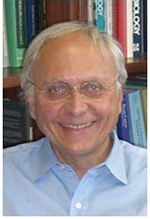 Hutchinson-Gilford Progeria Syndrome (HGPS) is a rare segmental premature aging disorder in which affected children acquire several phenotypic characteristics of accelerated aging. The majority of HGPS cases are caused by a de novo mutation in the gene encoding lamin A (LA) that activates a cryptic splice site in the primary transcript. The resulting mRNA encodes a permanently farnesylated LA with a 50 amino acid deletion in the carboxyl terminal domain called progerin. Although this permanently farnesylated progerin has been demonstrated to be the causative factor in the disease, the mechanism by which the abnormal protein exerts its effects remain unknown. Recently, Dr. Goldman and others have mapped many of the post-translational modification sites in LA. Recently he has observed that LA contains three distinct regions of phosphorylated serine and threonine residues in its unstructured non-α-helical C- and N- terminal domains. One of these regions is entirely within the 50 amino acid peptide deleted in progerin, suggesting that this region and its post-translational modification could be involved in LA processing and function. His lab also identified several phosphorylation sites that have a high turnover of phosphorylation during interphase. These include the two major phosphorylation sites previously shown to be important for lamin disassembly and assembly at mitosis. Another high turnover site is present in the region near the carboxyl terminus and is deleted in progerin. Preliminary experiments indicate that these high turnover sites are involved in the regulation of LA localization and mobility. Dr. Goldman will investigate the role of site-specific phosphorylation in the processing, localization, mobility and assembly of LA and progerin into a lamina structure. The proposed studies may shed new light on the function of post-translational modifications of specific sites within LA, especially those which are deleted in progerin. The results should provide new insights into the etiology of HGPS. The findings from these studies may also point to new therapeutic interventions for HGPS patients, targeting modifications to LA that are important for regulating lamin functions.
Hutchinson-Gilford Progeria Syndrome (HGPS) is a rare segmental premature aging disorder in which affected children acquire several phenotypic characteristics of accelerated aging. The majority of HGPS cases are caused by a de novo mutation in the gene encoding lamin A (LA) that activates a cryptic splice site in the primary transcript. The resulting mRNA encodes a permanently farnesylated LA with a 50 amino acid deletion in the carboxyl terminal domain called progerin. Although this permanently farnesylated progerin has been demonstrated to be the causative factor in the disease, the mechanism by which the abnormal protein exerts its effects remain unknown. Recently, Dr. Goldman and others have mapped many of the post-translational modification sites in LA. Recently he has observed that LA contains three distinct regions of phosphorylated serine and threonine residues in its unstructured non-α-helical C- and N- terminal domains. One of these regions is entirely within the 50 amino acid peptide deleted in progerin, suggesting that this region and its post-translational modification could be involved in LA processing and function. His lab also identified several phosphorylation sites that have a high turnover of phosphorylation during interphase. These include the two major phosphorylation sites previously shown to be important for lamin disassembly and assembly at mitosis. Another high turnover site is present in the region near the carboxyl terminus and is deleted in progerin. Preliminary experiments indicate that these high turnover sites are involved in the regulation of LA localization and mobility. Dr. Goldman will investigate the role of site-specific phosphorylation in the processing, localization, mobility and assembly of LA and progerin into a lamina structure. The proposed studies may shed new light on the function of post-translational modifications of specific sites within LA, especially those which are deleted in progerin. The results should provide new insights into the etiology of HGPS. The findings from these studies may also point to new therapeutic interventions for HGPS patients, targeting modifications to LA that are important for regulating lamin functions.
Robert D. Goldman, PhD, is the Stephen Walter Ranson Professor and Chairman of the Department of Cell and Molecular Biology at Northwestern University Feinberg School of Medicine. He is an authority on the structure and function of the cytoskeletal and nucleoskeletal intermediate filament systems. He and his colleagues have published over 240 scientific articles. His work has led to a number of honors and awards, including an Ellison Foundation Senior Scholar Award in human aging and a MERIT award from the National Institute of General Medical Sciences. Dr. Goldman is a Fellow of the American Association for the Advancement of Science, and served on its board of directors from 1997-2001. He has held numerous positions in the scientific community, including organizing meetings and editing monographs and lab manuals for the Cold Spring Harbor Laboratory and has served on review committees for the American Cancer Society and the NIH. He was President of the American Society for Cell Biology and of the American Association of Anatomy, Cell Biology and Neuroscience Chairpersons. Goldman founded and for many years directed the Science Writers Hands On Fellowship Program at the Marine Biological Laboratory (MBL) and served on the MBL Board of Trustees, as Director of the MBL’s Physiology Course and was Director of the MBL’s Whitman Research Center. He is an Associate Editor of the FASEB Journal, the Molecular Biology of the Cell and Bioarchitecture. He also serves on the Editorial Boards of Aging Cell and Nucleus.
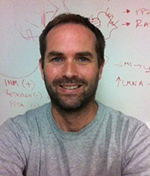 The molecular mechanisms that control the abundance of Lamin A protein are not well understood. We have shown that the inner nuclear membrane protein Man1 prevents the accumulation of Lamin A in human cells. We will determine whether Man1 also acts to limit the accumulation of progerin, the mutant form of Lamin A that causes Hutchison-Gilford Progeria Syndrome (HGPS), and if so, whether this pathway represents a novel target for therapeutics that delay or prevent the accumulation of progerin in children with HGPS.
The molecular mechanisms that control the abundance of Lamin A protein are not well understood. We have shown that the inner nuclear membrane protein Man1 prevents the accumulation of Lamin A in human cells. We will determine whether Man1 also acts to limit the accumulation of progerin, the mutant form of Lamin A that causes Hutchison-Gilford Progeria Syndrome (HGPS), and if so, whether this pathway represents a novel target for therapeutics that delay or prevent the accumulation of progerin in children with HGPS.
Topher Carroll was a graduate student in the lab of David Morgan at University of California San Francisco where he studied the enzymology of the anaphase-promoting complex. He then went to Aaron Straight’s lab in the Dept. of Biochemistry at Stanford University to explore the epigenetic mechanisms that regulate centromere assembly and propagation. Topher started his own lab in the Dept. of Cell Biology at Yale University in the spring of 2012. His lab is interested in nuclear organization and its relationship to chromatin structure and human disease.
 This project aims to gain new insight into the etiology of Hutchinson-Gilford Progeria Syndrome (HGPS) by tackling how mutation in lamin A –which results in expression of a mutated form of lamin A termed progerin–alters the function of the protein Nup153, especially in the context of DNA damage. Nup153 is a component of a large structure called the nuclear pore complex and is recently recognized to participate in the cellular response to DNA damage. Lamin A is known to interact with Nup153 and also participates in the response to DNA damage. We will study this functional intersection, and build on these connections with the goal of rapidly integrating new information into the context of HGPS.
This project aims to gain new insight into the etiology of Hutchinson-Gilford Progeria Syndrome (HGPS) by tackling how mutation in lamin A –which results in expression of a mutated form of lamin A termed progerin–alters the function of the protein Nup153, especially in the context of DNA damage. Nup153 is a component of a large structure called the nuclear pore complex and is recently recognized to participate in the cellular response to DNA damage. Lamin A is known to interact with Nup153 and also participates in the response to DNA damage. We will study this functional intersection, and build on these connections with the goal of rapidly integrating new information into the context of HGPS.
Katie Ullman received a BA from Northwestern University and then attended Stanford University for her PhD studies. Following a postdoctoral fellowship at University of California, San Diego, she joined the faculty of the University of Utah in 1998. Katie is a member of the Departments of Oncological Sciences and Biochemistry, as well as an Investigator in the Huntsman Cancer Institute. She is the recipient of a Career Award in the Biomedical Sciences from the Burroughs Wellcome Fund and co-leads the Cell Response and Regulation Program in the Cancer Center.
 Progerin has been viewed as an ‘unnatural’ form of lamin A. However new work suggests progerin is expressed at high levels at two specific times and places in the human body—after birth when the newborn heart is being remodeled (closure of the ductus arteriosus), and in cells (fibroblasts) exposed to ultraviolet (UV-A) light. This suggests progerin is a natural gene product that is expressed at specific times, for specific (unknown) reasons. A basic understanding of these proposed ‘natural’ roles of progerin might identify new pathways that could be targeted therapeutically in HGPS. Starting with newborn cow hearts, and UVA-irradiated fibroblasts, this project will purify and identify proteins that associate with progerin, and evaluate their known or potential impact on HGPS. We will also test the possibility that progerin escapes regulation by an essential enzyme (‘OGT’; O-GlcNAc Transferase) that normally ‘tags’ the lamin A tail with many copies of a small sugar (‘GlcNAc’). This project will identify sugar-modified site(s) in lamin A versus progerin, ask if these modifications promote healthy lamin functions, and determine if they are influenced by drugs in HGPS clinical trials.
Progerin has been viewed as an ‘unnatural’ form of lamin A. However new work suggests progerin is expressed at high levels at two specific times and places in the human body—after birth when the newborn heart is being remodeled (closure of the ductus arteriosus), and in cells (fibroblasts) exposed to ultraviolet (UV-A) light. This suggests progerin is a natural gene product that is expressed at specific times, for specific (unknown) reasons. A basic understanding of these proposed ‘natural’ roles of progerin might identify new pathways that could be targeted therapeutically in HGPS. Starting with newborn cow hearts, and UVA-irradiated fibroblasts, this project will purify and identify proteins that associate with progerin, and evaluate their known or potential impact on HGPS. We will also test the possibility that progerin escapes regulation by an essential enzyme (‘OGT’; O-GlcNAc Transferase) that normally ‘tags’ the lamin A tail with many copies of a small sugar (‘GlcNAc’). This project will identify sugar-modified site(s) in lamin A versus progerin, ask if these modifications promote healthy lamin functions, and determine if they are influenced by drugs in HGPS clinical trials.
Katherine Wilson, PhD, Katherine L. Wilson grew up in the Pacific Northwest. She studied microbiology in Seattle (BS, University of Washington), biochemistry and genetics in San Francisco (PhD, UCSF) and began exploring nuclear structure as a postdoctoral fellow in San Diego (UCSD). She then joined the faculty at Johns Hopkins University School of Medicine in Baltimore, where she is Professor of Cell Biology. Her lab studies the ‘trio’ of proteins (lamins, LEM-domain proteins and their enigmatic partner, BAF) that form nuclear ‘lamina’ structure, to understand how mutations in these proteins cause muscular dystrophy, heart disease, lipodystrophy, Hutchinson-Gilford Progeria Syndrome and Nestor-Guillermo Progeria Syndrome.
 He is actively involved in aging research in the Pacific Rim, which features the largest elderly population in the world. He is a visiting professor at the Aging Research Institute at Guangdong Medical College in China. He is also an Affiliate Professor in the Department of Biochemistry at the University of Washington, Seattle.
He is actively involved in aging research in the Pacific Rim, which features the largest elderly population in the world. He is a visiting professor at the Aging Research Institute at Guangdong Medical College in China. He is also an Affiliate Professor in the Department of Biochemistry at the University of Washington, Seattle.
Mutations in A-type nuclear lamins give rise to a range of diseases termed laminopathies, which are associated with cardiovascular disease, muscular dystrophy and progeria. Among these are a subset, which affect C-terminal processing lamin A, and give rise to progeroid syndromes that resemble accelerated aging. The question as to whether or not progerias are mechanistically related to the events that drive normal aging has plagued the aging field for decades with respect to both Werner’s and Hutchison-Gilford Progeria syndromes. Small molecules have recently been identified that slow aging (rapamycin) and protect against age-associated chronic diseases (rapamycin and resveratrol). If progeria is linked mechanistically to normal aging, these small molecules and others that are emerging may be effective agents in the treatment of HGPS. In this study, Dr. Kennedy’s lab plans to employ mouse models of progeria to evaluate the efficacy of resveratrol and rapamycin (as well as derivatives of both agents) toward ameliorating disease pathology.
Brian K. Kennedy, PhD is President and Chief Executive Officer of Buck Institute for Research on Aging He is internationally recognized for his research in the basic biology of aging and as a visionary committed to translating research discoveries into new ways of detecting, preventing and treating age-related conditions. These include Alzheimer’s and Parkinson’s diseases, cancer, stroke, diabetes and heart disease among others. He leads a team of 20 principal investigators at the Buck Institute – all of whom are involved in interdisciplinary research aimed at extending the healthy years of life.
The accumulation of progerin, an altered form of lamin A, causes the Hutchinson-Gilford Progeria syndrome. The ideal treatment for the disease should prevent the accumulation of progerin by decreasing its synthesis or promoting its degradation. However, little is known about the normal turnover of lamin A or progerin. The accumulation of progerin in nuclear lamina is controlled by farnesylation. We have found that lamin A farnesylation controls its phosphorylation at serine 22, an event previously linked to depolimerazation of the nuclear lamina during mitosis. However, we have found that S22 phosphorylation also occurs during interphase and is associated to the generation of progerin cleavage fragments. We propose a new pathway for progerin turnover that includes defarnesylation and S22 phosphorylation. We think that a molecular understanding of this pathway can leads to novel therapeutic possibilities for progeria. In particular the identification of kinases and phosphatases regulating the phosphorylation of lamin A at serine 22 and proteases mediating lamin A tunover will help to identify drugs that stimulate progerin turnover and improve HGPS patients.
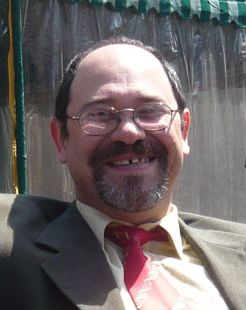 Dr Gerardo Ferbeyre graduated from Medical School at the University of Havana, Cuba in 1987 and has a PhD in biochemistry from the University of Montreal in Canada where he studied ribozymes. He did postdoctoral training at Cold Spring Harbor Laboratory with Dr. Scott Lowe. There he established a link between the promyelocytic leukemia protein PML and oncogene-induced senescence and studied the role of p53 and p19ARF as mediators of cellular senescence. In October 2001, Dr Ferbeyre joined the Department of biochemistry of the University of Montreal to continue his scientific research on senescence and the possibilities to reactivate the promyelocytic leukemia protein to treat cancers. Recent contributions from his laboratory include the discovery that DNA damage signaling mediates senescence and a link between defects in lamin A expression and senescence.
Dr Gerardo Ferbeyre graduated from Medical School at the University of Havana, Cuba in 1987 and has a PhD in biochemistry from the University of Montreal in Canada where he studied ribozymes. He did postdoctoral training at Cold Spring Harbor Laboratory with Dr. Scott Lowe. There he established a link between the promyelocytic leukemia protein PML and oncogene-induced senescence and studied the role of p53 and p19ARF as mediators of cellular senescence. In October 2001, Dr Ferbeyre joined the Department of biochemistry of the University of Montreal to continue his scientific research on senescence and the possibilities to reactivate the promyelocytic leukemia protein to treat cancers. Recent contributions from his laboratory include the discovery that DNA damage signaling mediates senescence and a link between defects in lamin A expression and senescence.
Dr. Misteli’s team is developing novel therapeutic strategies for Progeria. His group’s work focuses on interfering with the production of the progerin protein using molecular tools and to find novel small molecules to counteract the detrimental effects of progerin in patient cells. These efforts will lead to a detailed cell biological understanding of Progeria cells and will bring us closer to a molecularly targeted therapy for Progeria.
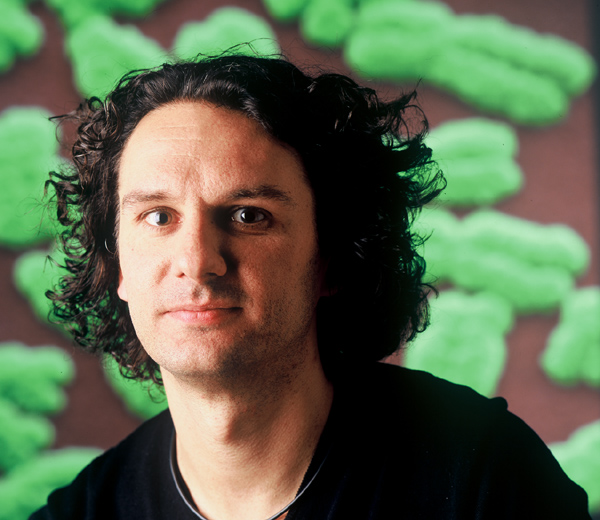
Tom Misteli is an internationally renowned cell biologist who pioneered the use of imaging approaches to study genomes and gene expression in living cells. He is a Senior Investigator and Associate Director at the National Cancer Institute, NIH. His laboratory’s interest is to uncover fundamental principles of spatial genome organization and to apply this knowledge to the development of novel diagnostic and therapeutic strategies for cancer and aging. He has received numerous awards including the Gold Medal of the Charles University, the Flemming Award, the Gian-Tondury Prize, the NIH Director’s Award, and an NIH Merit Award. He acts as an advisor for numerous national and international agencies and serves on several editorial boards including Cell. He is the Editor-in-Chief of The Journal of Cell Biology and of Current Opinion in Cell Biology.
Hutchinson-Gilford progeria syndrome (HGPS) is caused by mutations in the lamin A gene, which results in the production and accumulation of a mutant prelamin A protein termed progerin. Because this protein accumulates and interferes with nuclear components and functions, identifying progerin direct effectors during mitosis and differentiation is crucial for understanding how and when progerin triggers the nuclear defects that lead cells to premature senesce.
In this study Dr. Djabali lab’s plans to identify progerin direct effectors within the nuclear scaffold, nuclear envelope, and nuclear interior to determine the initial molecular interactions that are disrupted by progerin expression. Toward this end, they will use anti-progerin antibodies and HGPS cellular models, including fibroblasts and skin derived-precursor cells established from skin biopsies derived from patients with HGPS (PRF Cell Bank). They will combine biochemical and cellular imaging to identify progerin effectors and investigate their contribution to the molecular events leading to the typical phenotypic changes observed in HGPS cells that are responsible for the development of HGPS disease. Insights gained from these studies will permit the identification of new therapeutic targets for HGPS treatment and new cellular endpoints for testing the efficacy of potential interventions. We hope that our work will provide the knowledge necessary to bring us and other teams in the HGPS field closer to finding a cure(s) that will help children with HGPS live a longer healthy life.

Karima Djabali, PhD, is Professor of Epigenetics of Aging, Faculty of Medicine, Department of Dermatology and Institute for Medical Engineering (IMETUM) at the Technical University of Munich Germany. Dr. Djabali received her MSc and PhD in Biochemistry at the University Paris VII. She performed her thesis work at the College de France (Prof. F. Gros lab, France) and at the Rockefeller University (Prof. G. Blobel lab, USA). She carried out her postdoctoral research at EMBL (Heidelberg, Germany). She received a Chargé de recherche position at the National Centre for Scientific Research (CNRS, France) in 1994 and served as an associate research scientist in the Department of Dermatology, Columbia University of New York (USA) from 1999 to 2003. Thereafter, Dr Djabali served as an assistant professor in the Department of Dermatology at Columbia University of New York (USA) from 2004 to 2009. Dr. Djabali’s research centers around cellular aging in normal and disease states, with a particular focus on the molecular and cellular pathogenesis of premature aging diseases, such as Hutchinson-Gilford progeria syndrome (HGPS). Her research combines molecular biology, cellular biology, genetics, and proteomics to identify signaling pathways associated with cellular aging to develop preventive strategies to delay and/or correct aging processes.
Dr. Misteli’s laboratory seeks to identify lead compounds for HGPS drug development by screening of large libraries of chemical molecules. The Specialty Award was used to purchase robotic laboratory equipment required for these studies.
Tom Misteli is an internationally renowned cell biologist who pioneered the use of imaging approaches to study genomes and gene expression in living cells. He is a Senior Investigator and Associate Director at the National Cancer Institute, NIH. His laboratory’s interest is to uncover fundamental principles of spatial genome organization and to apply this knowledge to the development of novel diagnostic and therapeutic strategies for cancer and aging. He has received numerous awards including the Gold Medal of the Charles University, the Flemming Award, the Gian-Tondury Prize, the NIH Director’s Award, and an NIH Merit Award. He acts as an advisor for numerous national and international agencies and serves on several editorial boards including Cell. He is theEditor-in-Chief of The Journal of Cell Biology and of Current Opinion in Cell Biology.
Hutchinson-Gilford progeria syndrome (HGPS) is a rare fatal genetic disorder characterized by premature aging and death at an average age of 13 years. Most HGPS patients carry a mutation in the LMNA gene (encoding mainly lamin A and lamin C) that leads to the production of ‘progerin’, an abnormal protein that retains a toxic farnesyl modification. Experiments with cell and mouse models of HGPS have conclusively demonstrated that the total amount of farnesylated progerin and the ratio of progerin to mature lamin A determine disease severity in progeria and is a key factor for lifespan. Ongoing clinical trials are therefore evaluating the efficacy of drugs that inhibit progerin farnesylation in HGPS patients. The main objective of this project is to develop a method to routinely and accurately quantify progerin expression and its level of farnesylation, and the ratio of progerin to mature lamin A, in cells from HGPS patients. Measurement of these parameters will help assess the effectiveness of drugs targeting progerin farnesylation, as well as that of future strategies devised to inhibit abnormal processing (splicing) of the LMNA mRNA, the cause of HGPS in most patients. A secondary objective is to perform pilot studies for the development of a high-throughput strategy to identify mechanisms that activate aberrant LMNA splicing.
Vicente Andrés obtained his PhD in Biological Sciences from the University of Barcelona (1990). During postdoctoral training at the Children’s Hospital, Harvard University (1991-1994) and the St. Elizabeth’s Medical Center, Tufts University (1994-1995), he led studies into the role of homeobox and MEF2 transcription factors in processes of cellular differentiation and proliferation; and it was also during this period that he developed an interest in cardiovascular research. His career as an independent research scientist began in 1995 when he was appointed Assistant Professor of Medicine at Tufts. Since then Dr. Andrés and his group have studied vascular remodeling during atherosclerosis and post-angioplasty restenosis, and more recently they investigate the role of the nuclear envelope in the regulation of signal transduction, gene expression and cell-cycle activity in cardiovascular disease and aging, with particular emphasis on A-type lamins and Hutchinson-Gilford progeria syndrome (HGPS).
After obtaining a position as a Tenured Research Scientist in the Spanish National Research Council (CSIC), Dr. Andrés returned to Spain in 1999 to establish his research group in the Institute of Biomedicine of Valencia, where he worked as a Full Professor. Since 2006, his group has been a member of the Red Temática de Investigación Cooperativa en Enfermedades Cardiovasculares (RECAVA). He joined the Centro Nacional de Investigaciones Cardiovasculares (CNIC) in September 2009. In 2010 he was awarded the Doctor Leon Dumont Prize by the Belgian Society of Cardiology.
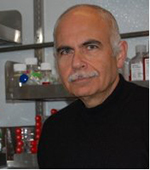 Dr. Benchimol has a long record of accomplishment in the area of p53 function. He will use his expertise to build upon intriguing preliminary data and test novel hypotheses regarding the role of p53 in mediating the premature senescence shown by cells from Hutchinson-Gilford Progeria syndrome (HGPS) patients. The first aim is designed to test the hypothesis that progerin causes replication stress, which in turn elicits a senescence growth arrest, and that p53 acts downstream of the progerin-induced replication stress. This aim is followed by a more mechanistic aim that is designed to determine how progerin and p53 collaborate to elicit a senescence response.
Dr. Benchimol has a long record of accomplishment in the area of p53 function. He will use his expertise to build upon intriguing preliminary data and test novel hypotheses regarding the role of p53 in mediating the premature senescence shown by cells from Hutchinson-Gilford Progeria syndrome (HGPS) patients. The first aim is designed to test the hypothesis that progerin causes replication stress, which in turn elicits a senescence growth arrest, and that p53 acts downstream of the progerin-induced replication stress. This aim is followed by a more mechanistic aim that is designed to determine how progerin and p53 collaborate to elicit a senescence response.
July 2012: To Tom Misteli, PhD, National Cancer Institute, NIH, Bethesda, MD; Specialty Award Amendment
Dr. Misteli’s laboratory seeks to identify lead compounds for HGPS drug development by screening of large libraries of chemical molecules. The Specialty Award was used to purchase robotic laboratory equipment required for these studies.
Tom Misteli is an internationally renowned cell biologist who pioneered the use of imaging approaches to study genomes and gene expression in living cells. He is a Senior Investigator and Associate Director at the National Cancer Institute, NIH. His laboratory’s interest is to uncover fundamental principles of spatial genome organization and to apply this knowledge to the development of novel diagnostic and therapeutic strategies for cancer and aging. He has received numerous awards including the Gold Medal of the Charles University, the Flemming Award, the Gian-Tondury Prize, the NIH Director’s Award, and an NIH Merit Award. He acts as an advisor for numerous national and international agencies and serves on several editorial boards including Cell. He is theEditor-in-Chief of The Journal of Cell Biology and of Current Opinion in Cell Biology.
 A-type lamins are important structural proteins of the nucleus in mammalian cells. They are the major components of a filamentous meshwork located at the inner surface of the nuclear envelope and provide not only shape and mechanical stability to the nucleus, but are also involved in essential cellular processes such as DNA replication and gene expression. Beside their localization at the nuclear periphery, an additional more dynamic pool of A-type lamins is present within the nuclear interior, which is suggested to be important for proper cell proliferation and differentiation. In the last thirteen years over 300 mutations in the gene encoding A-type lamins have been associated with various human diseases, including the premature aging disease Hutchinson-Gilford Progeria Syndrome (HGPS). The molecular disease mechanisms are still poorly understood hampering the development of effective therapeutic strategies. The mutation in the A-type lamin gene associated with HGPS results in the production of a mutant lamin A protein, termed progerin. In contrast to normal lamin A, progerin is stably anchored to the nuclear membrane, which alters the mechanical properties of the nucleus. Our working hypothesis proposes that the membrane-anchored progerin also severely affects the dynamic pool of lamins within the nuclear interior and thus cell proliferation and differentiation.
A-type lamins are important structural proteins of the nucleus in mammalian cells. They are the major components of a filamentous meshwork located at the inner surface of the nuclear envelope and provide not only shape and mechanical stability to the nucleus, but are also involved in essential cellular processes such as DNA replication and gene expression. Beside their localization at the nuclear periphery, an additional more dynamic pool of A-type lamins is present within the nuclear interior, which is suggested to be important for proper cell proliferation and differentiation. In the last thirteen years over 300 mutations in the gene encoding A-type lamins have been associated with various human diseases, including the premature aging disease Hutchinson-Gilford Progeria Syndrome (HGPS). The molecular disease mechanisms are still poorly understood hampering the development of effective therapeutic strategies. The mutation in the A-type lamin gene associated with HGPS results in the production of a mutant lamin A protein, termed progerin. In contrast to normal lamin A, progerin is stably anchored to the nuclear membrane, which alters the mechanical properties of the nucleus. Our working hypothesis proposes that the membrane-anchored progerin also severely affects the dynamic pool of lamins within the nuclear interior and thus cell proliferation and differentiation.
One aim of this project is to identify the mechanisms responsible for anchoring progerin to the nuclear membrane and to find ways to specifically inhibit this membrane anchorage with the prospect of rescuing the dynamic lamin pool and thereby reverting cellular phenotypes associated with HGPS. Previous findings show that this dynamic pool of lamin in a complex with other proteins regulates cell proliferation via the retinoblastoma protein (pRb) pathway. In support of our hypothesis, it was recently shown that in cells from HGPS patients the pRb pathway is indeed impaired. In the second aim of our project we propose to study the effects of progerin on the regulation, dynamics and activities of the mobile, nucleoplasmic lamin A pool and its associated proteins and its impact on pRb signaling at molecular detail. The results of our study are expected to shed light on the disease-causing molecular mechanisms behind HGPS and may help to identify novel drug targets and drugs for more efficient and targeted therapies.
Dr. Dechat received his MSc and PhD in Biochemistry at the University of Vienna, Austria. After a year as PostDoc at the Neuromuscular Research Department of the Medical University of Vienna, he was a PostDoc in the laboratory of Prof. Robert Goldman, Northwestern University, Feinberg Medical School, Chicago, Illinois from 2004-2009, working on the structural and functional characterization of nuclear lamins in health and disease with a main focus on the mechanisms leading to Hutchinson-Gilford Progeria Syndrome due to the expression of progerin. Since 2010 he has been an Assistant Professor at the Max F. Perutz Laboratories, Medical University of Vienna, studying the structural and functional properties of nucleoplasmic A-type lamins and LAP2 during the cell cycle and in various diseases associated with mutations in lamins A/C and LAP2.
 In this study Dr. Eriksson’s lab plans to use their recently developed model for progeria with expression of the most commonLMNA gene mutation in the bone. They have previously shown that suppression of the expression of the progeria mutation after progeria skin disease development led to an almost complete reversal of the disease phenotype (Sagelius, Rosengardtenet al. 2008). Progeria disease progression will be monitored in the bone tissue at different time points following inhibition of the mutation to analyze the possibility for disease reversal. Their preliminary results indicate improved clinical symptoms and give promise towards identifying a possible treatment and cure for this disease.
In this study Dr. Eriksson’s lab plans to use their recently developed model for progeria with expression of the most commonLMNA gene mutation in the bone. They have previously shown that suppression of the expression of the progeria mutation after progeria skin disease development led to an almost complete reversal of the disease phenotype (Sagelius, Rosengardtenet al. 2008). Progeria disease progression will be monitored in the bone tissue at different time points following inhibition of the mutation to analyze the possibility for disease reversal. Their preliminary results indicate improved clinical symptoms and give promise towards identifying a possible treatment and cure for this disease.
Dr. Eriksson received her MSc Molecular biology at Umeå University, Sweden in1996, and her PhD in Neurology from the Karolinska Institutet in 2001. She was a postdoctoral fellow at the National Human Genome Research Institute, NationalInstitutes of Health 2001-2003, and has been a PI/Research group leader andAssistant professor at the Dept of Biosciences and Nutrition at the Karolinska Institute since 2003. She is also Associate Professor in Medical Genetics at the Karolinska Institute. Her research interests include Progeria and genetic mechanisms of aging.
December 2011 (start date March 1, 2012): To Colin L. Stewart D.Phil, Institute of Medical Biology, Singapore; “Defining themolecular basis to vascular smooth muscle deterioration in Progeria
Children with Progeria die from cardiovascular disease, either a heart attack or stroke. Over the past decade it has become apparent that a key tissue affected by Progeria is the child’s blood vessels. Progeria appears to weaken the muscular wall of the blood vessels by somehow causing the smooth muscle cells to die. This not only may make the vessels more fragile, but also stimulates plaque formation leading to blockage of the vessel. Both outcomes result in the blood vessels failing and, if this is in the heart vessels, this will result in a heart attack.
Colin Stewart and his colleague Oliver Dreesen plan to study how the defective form of the nuclear protein Lamin A (progerin) specificallyaffects the growth and survival of the smooth muscle cells in blood vessels. Using stem cell technology Colin and colleagues were able to derive stem cells from skin cells established from 2 children with Progeria. These patient specific stem cells they were then turned into smooth muscle cells resembling those from blood vessels. Intriguingly these smooth muscle cells produced some of the highest levels of progerin, compared to other cell types, suggesting a possible reason as to why blood vessels are severely affected in Progeria. Smooth muscle cells with progerin showed evidence of damage to the DNA in the cell’s nucleus. Colin and Oliver will use these and other cells derived from the stem cells to understand what type of DNA is damaged and what biochemical processes, necessary for the survival of the smooth muscle cells are affected by progerin. By being able to directly study smooth muscle cells recreated from children with Progeria, they hope to identify exactly what goes wrong with the cells so as to develop novel procedures to test new drugs that may eventually help treat affected children.
Colin Stewart received his D. Phil from the University of Oxford where he studied interactions between teratocarcinomas, the forerunners of ES cells, and early mouse embryos. Following postdoctoral work with Rudolf Jaenisch in Hamburg, he was a staff scientist at EMBL in Heidelberg. There he was instrumental in discovering the role of the cytokine LIF in maintaining mouse ES cells. He also initiated his interest in the nuclear lamins and nuclear architecture in development. He continued his studies on the lamins, stem cells and genomic imprinting following relocation to the Roche Institute of Molecular Biology in New Jersey. In 1996 he moved to the ABL research program in Frederick, Maryland and in 1999 was appointed Chief of theLaboratory of Cancer and Developmental Biology at the National Cancer Institute.In the last decade his interests have focused on the functional architecture ofthe cell’s nucleus in stem cells, regeneration, aging and disease, particularlywith regard to how the nuclear functions are integrated with cytoskeletal dynamics in development and disease. Since June 2007 he has been senior principal investigator and assistant director at the Institute of MedicalBiology at the Singapore Biopolis.
Oliver Dreesen is currently a Senior Research Fellow at the Institute of Medical Biology in Singapore. After completing his undergraduate degree in Bern, Switzerland, Oliver held research positions at the Pasteur Institute in Paris and the University of California, San Diego. Hereceived his PhD from The Rockefeller University in New York where he studied the structure and function of chromosome ends (telomeres) during antigenic variation in African Trypanosomes. His current research interests focus on the roleof telomeres in human disease, aging and cellular reprogramming.
 Hutchinson-Gilford Progeria Syndrome (HGPS) is a rare and debilitating disease that is caused by mutation in the lamin A protein. Past studies have identified the mutations in lamin A that cause the disease and have evaluated its aberrant function in human cells and in mouse models of HGPS. This information, coupled with genome-wide expression studies comparing HGPS cells with those from unaffected individuals, has dramatically advanced our understanding of this disease. One area that has been neglected in HGPS research is a thorough analysis of the metabolic changes that occur in HGPS cells relative to healthy controls. Metabolic abnormalities accompany many human diseases (e.g. atherosclerosis, diabetes, and cancer), and clinical evaluation of HGPS suggests chronic abnormalities in basic metabolic pathways.
Hutchinson-Gilford Progeria Syndrome (HGPS) is a rare and debilitating disease that is caused by mutation in the lamin A protein. Past studies have identified the mutations in lamin A that cause the disease and have evaluated its aberrant function in human cells and in mouse models of HGPS. This information, coupled with genome-wide expression studies comparing HGPS cells with those from unaffected individuals, has dramatically advanced our understanding of this disease. One area that has been neglected in HGPS research is a thorough analysis of the metabolic changes that occur in HGPS cells relative to healthy controls. Metabolic abnormalities accompany many human diseases (e.g. atherosclerosis, diabetes, and cancer), and clinical evaluation of HGPS suggests chronic abnormalities in basic metabolic pathways.
Cellular metabolites represent the biochemicals that—together with proteins and nucleic acids—comprise the entire repertoire of molecules within a cell. As such, metabolic changes are arguably as important as gene expression changes in disease pathogenesis. Indeed, the burgeoning field of “metabolomics” has already yielded many key discoveries linking single metabolites to specific human diseases, including leukemia and metastatic prostate cancer. Therefore, identification of the metabolites and metabolic pathways that are altered in HGPS should provide insight into disease pathogenesis and may uncover entirely new therapeutic strategies. This is especially germane to HGPS, as numerous cell-based and in vivo studies have demonstrated that lamin A mutations do not cause irreversible damage and that cellular HGPS phenotypes, if properly treated, can actually be eliminated.
Upon completing a comprehensive, comparative screen of the metabolites present in cells derived from healthy donors and HGPS patients, follow-up biochemical and cell-based assays will establish whether key metabolites identified in the screen can induce HGPS phenotypes in healthy cells, or reverse HGPS phenotypes in diseased cells. Consequently, this study will not only reveal how HGPS-associated lamin A mutations affect global metabolic pathways in human cells, it will also begin to evaluate whether targeting these pathways represents an effective approach for therapeutic intervention.
The Taatjes lab combines expertise in biochemistry, proteomics, and cryo-electron microscopy to study the fundamental mechanisms that regulate human gene expression. The lab also implements genome-wide and metabolomics approaches to help link mechanistic findings with physiological consequences. Metabolomics studies in the Taatjes lab, in conjunction with mechanistic studies with a p53 isoform that causes accelerated aging, serve as a basis for this HGPS study.
 Hutchinson-Gilford progeria syndrome (HGPS) is caused by mutations in the gene encoding lamins A and C. Children with HGPS develop hair loss, bone defects, loss of fat tissue, and other signs of accelerated aging before succumbing to stroke or myocardial infarctions in their early teens. Post-mortem studies reveal a dramatic loss of vascular smooth muscle cells in the larger blood vessels of HGPS patients. Vascular smooth muscle cells are critical for the normal function of blood vessels, and loss of vascular smooth muscle cells may constitute the driving force behind the lethal cardiovascular disease in HGPS.
Hutchinson-Gilford progeria syndrome (HGPS) is caused by mutations in the gene encoding lamins A and C. Children with HGPS develop hair loss, bone defects, loss of fat tissue, and other signs of accelerated aging before succumbing to stroke or myocardial infarctions in their early teens. Post-mortem studies reveal a dramatic loss of vascular smooth muscle cells in the larger blood vessels of HGPS patients. Vascular smooth muscle cells are critical for the normal function of blood vessels, and loss of vascular smooth muscle cells may constitute the driving force behind the lethal cardiovascular disease in HGPS.
We have previously demonstrated that skin cells from HGPS patients are more sensitive to mechanical stress, resulting in increased cell death when subjected to repetitive stretch. In this project, we will test whether an increased sensitivity to mechanical stress is also responsible for the progressive loss of vascular smooth muscle cells in HGPS, as large blood vessels are exposed to repetitive vessel strain with each heartbeat. Combined with impaired replenishment of the damaged cells, the increased mechanical sensitivity could lead to the progressive loss of vascular smooth muscle cells and the development of cardiovascular disease in HGPS.
To study the effect of mechanical stress on vascular smooth muscle cells in vivo, we will use surgical procedures to locally increase blood pressure or to create vascular injuries in large blood vessels and then compare the effect on survival and regeneration of vascular smooth muscle cells in in a mouse model of HGPS and in healthy controls. Insights gained from these studies will yield new information on the molecular mechanisms underlying the cardiovascular disease in HGPS and may offer new clues into the development of therapeutic approaches.
Dr. Lammerding is an Assistant Professor at Cornell University in the Department of Biomedical Engineering and the Weill Institute for Cell and Molecular Biology. Before moving to Cornell University in 2011, Dr. Lammerding worked as an Assistant Professor in the Department of Medicine at Harvard Medical School/Brigham and Women’s Hospital and served as a Lecturer at the Massachusetts Institute of Technology. The Lammerding laboratory is studying subcellular biomechanics and the cellular signaling response to mechanical stimulation, with a particular focus on how mutations in nuclear envelope proteins such as lamins can render cells more sensitive to mechanical stress and affect their mechanotransduction signaling. Insights gained from this work can lead to a better understanding of the molecular mechanism underlying various laminopathies, a diverse group of diseases including Hutchison-Gilford progeria syndrome, Emery-Dreifuss muscular dystrophy and familial partial lipodystrophy.
The A and B-type nuclear lamins are proteins located within the cell’s nucleus. These proteins form separate, but interacting structural networks within the nucleus. The lamins are essential for determining the size, shape, and mechanical properties of the nucleus; and they provide an intranuclear scaffold for organizing chromosomes. We have discovered that when one lamin network is altered by a mutation leading to a malfunction, the other is also altered. Although the typical and atypical forms of Hutchinson Gilford Progeria Syndrome are caused by different mutations in the nuclear lamin A gene, we have found that the B-type lamin networks in progeria patients’ cells are also abnormally altered. The B-type lamins are expressed in all somatic cells from fertilization onward, and they are known to be important in regulating many nuclear functions including DNA replication and gene transcription. Yet little attention has been paid to the lamin B isoforms and their roles in progeria. In this proposal our goal is to determine the effects of the expression of progerin, the most frequently encountered mutant form of lamin A, and other atypical progeria lamin A mutations on the expression, structure and function of the B-type lamins. Our preliminary studies suggest that changes in the B-type lamin networks are important mediators of the cellular pathology in HGPS, because of their interactions with A-type lamins. We will examine changes in the B-type lamins in progeria patient cells and their relationships to cell growth defects and premature senescence. We will also investigate the effects of farnesyltransferase inhibition on the expression, modification and stability of the B-type lamins. This is important as B-type lamins are normally stably farnesylated. These proposed studies are particularly timely given the ongoing clinical trials involving progeria patients utilizing drugs that inhibit protein farnesylation. Our studies promise to provide new insights into the molecular mechanisms responsible for the premature aging of cells in patients with this devastating disease. The results of our investigations should reveal insights into additional potential targets to consider in the development of new therapies for HGPS patients.
Robert D. Goldman, PhD, is the Stephen Walter Ranson Professor and Chairman of the Department of Cell and Molecular Biology at Northwestern University’s Feinberg School of Medicine in Chicago. Dr. Goldman received his PhD in biology from Princeton University and carried out postdoctoral research at the University of London and at the MRC Institute of Virology in Glasgow. He served on the faculties of Case Western Reserve University, Carnegie-Mellon University and was a Visiting Scientist at the Cold Spring Harbor Laboratory prior to joining Northwestern. He is widely recognized as an authority on the structure and function of the nucleoskeletal and cytoskeletal intermediate filament systems. In the early 1980s he became fascinated with the discovery that lamins were the nuclear form of intermediate filaments. Since that time, his research laboratory has shown that the nuclear lamins are determinants of the size and shape of the nucleus and that they are critically important factors in the disassembly and reassembly of the nucleus during cell division. His research group has further demonstrated that the lamins assemble into a molecular scaffold within the cell’s nucleus required for DNA replication, transcription and chromatin organization. In recent years his interest in the lamins has focused on the impact of lamin A mutations that give rise to the premature aging disease Hutchinson Gilford Progeria Syndrome and other atypical forms of progeria. This has led his research into determining the roles of lamins in chromosome organization, in regulating the epigenetic modifications of chromatin and in cell proliferation and senescence.
Dr. Goldman is a Fellow of the American Association for the Advancement of Science (AAAS), and has been the recipient of Ellison Medical Foundation Senior Scholar and NIH MERIT Awards. He is a prolific writer, has edited numerous volumes for the Cold Spring Harbor Laboratory Press and serves as Associate Editor for the FASEB Journal and Molecular Biology of the Cell. He has been elected to numerous positions in scientific societies including the Board of Directors of the AAAS, the Council and President of the American Society for Cell Biology, and was President of the American Association of Anatomy, Cell Biology and Neuroscience Chairs. He has served on numerous review committees for the American Cancer Society and the NIH, is Director of the Whitman Center of the Marine Biological Laboratory and is frequently invited to organize and speak at international meetings both here and abroad.
Hutchinson-Gilford Progeria Syndrome (HGPS) is caused by a mutation in the lamin A gene, which results in the production and accumulation of the mutant disease protein termed progerin. Since this protein accumulates, determining how it is degraded is important from a therapeutic standpoint. The focus of this work is to determine the cellular clearance pathways responsible for degrading the progerin protein. Using this information, we hope to be able to manipulate those pathways to facilitate progerin clearance, with the goal of enhancing current or future therapies for HGPS.
Dr. Graziotto is a Postdoctoral Fellow in the Department of Neurology at Massachusetts General Hospital. He is currently working in the laboratory of Dr. Dimitri Krainc. A major focus of the lab is the study of neurodegenerative disorders in which mutant proteins accumulate and form aggregates. The laboratory studies the clearance mechanisms of these proteins in order to identify modifiers of these pathways which could lead to future targets for treatment.
 “Progeria” describes a number of disorders which exhibit different aspects of premature aging or segmental progeria. These include HGPS and MAD, both with LMNA mutations, and the DNA repair disorders Cockayne and Werner syndromes. In addition, there are a number of cases of “atypical” progeria with overlapping but distinct features. PRF has collected cell lines and/or DNA on 12 such cases of atypical progeria, representing the largest cohort ever assembled. DNAs have been examined for LMNA exon mutations and none were found, and they are currently being tested for ZMPSTE mutations in Dr.Glover’s lab. In addition, they have phenotypes distinct from classic Werner and Cockayne syndromes. Therefore, these individuals have mutations in unique progeria genes. Since most such cases are sporadic, this has been a daunting task. However, during the last few years enormous technical progress has been achieved in the area of DNA sequencing. Whole genome exon sequencing, or “exome sequencing”, has been successfully used to identify mutant genes for a number of monogenic traits including, Miller syndrome, Kabuki syndrome, non-specific mental retardation, Perrault syndrome and many others, with numerous other studies in progress including many studies of de novo mutations. This is a powerful tool for gene identification and it is predicted that in the next few years, we will understand the genetic cause of most monogenic traits.
“Progeria” describes a number of disorders which exhibit different aspects of premature aging or segmental progeria. These include HGPS and MAD, both with LMNA mutations, and the DNA repair disorders Cockayne and Werner syndromes. In addition, there are a number of cases of “atypical” progeria with overlapping but distinct features. PRF has collected cell lines and/or DNA on 12 such cases of atypical progeria, representing the largest cohort ever assembled. DNAs have been examined for LMNA exon mutations and none were found, and they are currently being tested for ZMPSTE mutations in Dr.Glover’s lab. In addition, they have phenotypes distinct from classic Werner and Cockayne syndromes. Therefore, these individuals have mutations in unique progeria genes. Since most such cases are sporadic, this has been a daunting task. However, during the last few years enormous technical progress has been achieved in the area of DNA sequencing. Whole genome exon sequencing, or “exome sequencing”, has been successfully used to identify mutant genes for a number of monogenic traits including, Miller syndrome, Kabuki syndrome, non-specific mental retardation, Perrault syndrome and many others, with numerous other studies in progress including many studies of de novo mutations. This is a powerful tool for gene identification and it is predicted that in the next few years, we will understand the genetic cause of most monogenic traits.
In view of these technological advances and the availability of similar patients, Dr. Glover hypothesizes that mutations responsible for atypical progeria can be identified by whole exome sequencing of these patient samples. Identifying these mutations is essential to understanding disease etiology, developing effective treatments and in developing knowledge of intersecting and interacting molecular and cellular pathways in the progerias and normal aging. However, this is challenging given that these are apparently all de novo mutations and the phenotypes are heterogeneous. The immediate outcome of this study will be the discovery of 7-15 novel, likely deleterious mutations for each family that are shared by affected family members and may be unique to the family. The joint analysis of these genes across 6-12 families may well reveal instances of distinct deleterious alleles of the same gene, or different defects in the same functional pathway, appearing in multiple families, thus providing the first glimpse of new candidate genes/pathways for progeria. If successful, the impact of findings could be great and be directly relevant not only to the affected patient and, because of overlapping features, to other forms of progeria including HGPS as well as to normal aging.
Dr. Glover is a Professor in the Department of Human Genetics and Pediatrics at the University of Michigan. He is the author of over 120 research publications and book chapters. Dr. Glover has been actively involved in Progeria research for over a decade and has been a member of the PRF Medical Research Committee since its inception in 2004. His laboratory was involved in the research efforts that first identified LMNA gene mutations in HGPS and in demonstrating that farnyslyation inhibitors can reverse nuclear abnormalities of HGPS cells, opening the door to clinical trials. A major interest of his laboratory is the mechanisms and consequences of genome instability in human genetic disease. Current effort s are aimed at understanding the molecular mechanisms involved in producing copy number variant (CNV) mutations in the human genome. These are a common yet only recently recognized form of mutation important in normal human variation and numerous genetic diseases. However, unlike other forms of mutation, it is not fully understood how they are formed and the genetic and environmental risk factors involved.
The objective of this project is to define the molecular basis of replication abnormality and genome instability in Hutchinson-Gilford progeria syndrome (HGPS) cells. HGPS is a dominant premature aging disease and patients of the disease have an average lifespan of only 13 years. The disease is caused by a point mutation at 1822 or 1824 in exon 11 of lamin A gene, which results in sporadic production of a lamin A mutant protein with 50 amino acids internally truncated, called progerin. Lamin A is a major inner component of the nuclear envelope and skeleton of cells and the presence of progerin leads to abnormal nuclear morphology and genome instability in HGPS cells. Interestingly, recent studies showed that progerin is also produced in normal aging individuals and its level appears to increase with age by an average of 3% per year in coronary arteries. This increase is in concordance with many aspects of cardiovascular pathology in both HGPS and geriatric patients, implicating a potentially important role of progerin in aging and aging-related diseases such cancer and cardiovascular diseases.
While the genetic cause of HGPS is known, the molecular mechanisms by which the action of progerin leads to premature aging-associated phenotypes remain far from clear. We and others have recently demonstrated that HGPS has a phenotype of genome instability caused by cellular accumulation of DNA double-strand breaks (DSBs). DSB accumulation is also a common cause of systemic aging. We also found that Xeroderma Pigmentosum group A (XPA) mislocalizes to DSB sites in HGPS cells, leading to inhibition of DSB repair. Depletion of XPA in HGPS cells partially restores DSB repair. Based on these findings, we hypothesize that the DNA damage accumulation in HGPS is likely due to aberrant activities at replication forks which generate unrepairable DSBs, leading to early replication arrest or replicative senescence. Given the fact that HPGS cells are characterized with early replication arrest and premature replicative senescence, revealing the mechanisms underlying the defective activities at replication forks may hold a key to understand the causes of HGPS phenotypes. The understanding could lead to novel strategies for treatment of the disease by intervening in the disease-causing molecular pathways. On the other hand, it is well known that HGPS patients appear to be cancer-free. Although the mechanism remains unknown, it may be attributed to the premature replicative senescence of HPGS. In this research project, we will determine the molecular basis of DSB accumulation in HGPS with the focus on understanding how DNA damage is produced at replication forks. Next we will determine if progerin interacts with DNA replication factors and how the interaction causes the replication abnormalities.
Dr. Zou is a professor in the Department of Biochemistry and Molecular Biology of Quillen College of Medicine at East Tennessee State University. He received his PhD in Biophysics in 1991 from Clark University. Dr. Zou’s research has mainly focused on understanding the genome instability in cancer and related pathways including DNA repair and DNA damage checkpoints. He has recently become interested in genome instability and DNA damage responses in progeria caused by defective maturation of prelamin A, particularly Hutchinson-Gilford Progeria Syndrome, and his group has made interesting findings on the molecular mechanisms of genome instability in HGPS.
Dr. Cao’s work will investigate the effect of Everolimus on HGPS cells, alone or in combination with Lanafarnib. This study will allow the evaluation of both the therapeutic potential and the mechanistic basis for such combinatorial therapeutic approach.
Dr. Cao is an Assistant Professor in the Department of Cell Biology and Molecular Genetics at the University of Maryland. Dr. Cao’s lab is interested in studying cellular mechanisms in progeria and normal aging.
Dr. Makarov’s research interests are in the field of precursor messenger RNA (pre-mRNA) splicing. Pre-mRNA splicing is a cellular process in which non-coding sequences (introns) are removed and coding sequences (exons) are joined together to generate mRNA for protein production. Pre-mRNA splicing is somewhat similar to film editing: if it is not done properly, two unmatched scenes may be stitched together in one episode, which would not make sense. In splicing, if exon-intron boundaries (splice sites) are not correctly identified, the wrong mRNA will be produced. From this a faulty protein will be synthesised and this may cause disease. To extend the analogy, a film scenario is dramatically changed by the selection of scenes; by the same token, in a living cell, pre-mRNA can be processed in different ways via the alternative use of different splice sites. This phenomenon is called alternative splicing and allows the production of several proteins from a single gene. Dr. Makarov is currently focused on the study of disease-associated alternative splicing. The major ongoing project is on the study of the ageing-related pre-mRNA splicing of human LMNA gene, encoding lamin A and C proteins, and especially, its aberrant splicing that causes the premature ageing of Hutchinson Gilford Progeria Syndrome patients. The aim is to identify the proteins modulating the specific splicing outcomes which, in turn, are likely to affect the speed of the ageing process. In this respect, the pharmaceutical targeting of the proteins identified in the proposed research — inhibition of their function by small interacting molecules — may lead to the discovery of novel drugs capable of slowing the ageing process. The other ongoing projects are: (i) The study of SCLC (small cell lung cancer) associated alternative splicing of actinine-4 pre-mRNA; (ii) The hTERT alternative splicing regulation as a potential cancer therapeutic modality.
Dr. Makarov was born and grew up in Leningrad, USSR, where he also graduated from the Leningrad Polytechnical University, Department of Biophysics, in 1980. He earned his Ph.D. degree in Molecular Biology from the Leningrad Nuclear Physics Institute, Department of Molecular and Radiation Biophysics, USSR in 1986 for the study of molecular mechanisms of protein biosynthesis. When the Iron Curtain was lifted he got an opportunity to go abroad, and worked in the United States for three years from 1990-1993 (Washington University, St. Louis and UC Davis) where he continued the study of RNA processing in bacteria. In 1993 he moved to Europe and began to work at Ecole Normale Supérieure, Paris, France, where he studied the efficiency of translation initiation. At that point he began to think of applying his experimental experience from the study of prokaryotic translation to more complicated, fast developing areas of eukaryotic gene expression. Thus, since 1994, he pursued his research interests in the field of pre-mRNA splicing. In 1997, Dr, Makarov had a rare opportunity to join one of the biggest laboratories in the RNA processing field, the laboratory of Reinhard Lührmann in Germany, where pioneering work was being done in the isolation of the small nuclear ribonucleoprotein particles. His work continued in Lührmann’s laboratory until 2005, and the emphasis of his research was on the purification and characterisation of the spliceosomes. In 2007, Dr. Makarov was appointed as a lecturer at the Division of Biosciences, Brunel University, West London, where his current research is focused around the disease-associated alternative splicing.
Hutchinson–Gilford Progeria Syndrome (HGPS) is caused by a mutation in the lamin A gene, resulting in production of a shortened protein called progerin. Lamin A normally plays an important function in maintaining the organization of the cell nucleus, and the mutation that creates progerin may result in a disorganization that leads to changes in gene regulation, and ultimately HGPS. However, it is not known which genes interact with lamin A in normal cells, or with progerin in the cells of HGPS patients. We hypothesize that abnormal binding or dissociation of genes with lamin A or progerin in HGPS cells causes misregulation of genes, ultimately leading to HGPS. To find which genes interact with normal lamin A and progerin across the entire genome, Dr. Lieb will perform a technique called ChIP-seq. First, he aims to identify genes that abnormally bind to or detach from lamin A or progerin in HGPS cells. Second, he will perform ChIP-seq in HGPS cells treated with a farnesyltransferase inhibitor (FTI), which shows partial efficacy in treating HGPS symptoms in mouse models. This experiment will reveal which genes’ interactions remain abnormal even after FTI treatment. The data will allow his team to predict signaling pathways that may be responsible for HGPS and the persistent HGPS symptoms reported in FTI-treated mouse models, and will provide a clue for new drugs and treatments for HGPS patients.
Dr. Lieb is an Associate Professor in the Department of Biology and Carolina Center for Genome Sciences. The projects in his laboratory are united by the scientific goal of understanding relationships between DNA packaging, transcription factor targeting, and gene expression. They use three biological systems: S. cerevisiae (baker’s yeast) to address basic molecular mechanisms; C. elegans to test the importance of those mechanisms in a simple multicellular organism; and (3) cell lines and clinical samples to directly interrogate chromatin function in human development and disease. The experiments will be carried out by postdoctoral fellow Dr. Kohta Ikegami, who was trained as a graduate student at the University of Tokyo.
Dr. Misteli and his team are developing novel therapeutic strategies for Progeria. His group’s work focuses on interfering with the production of the progerin protein using highly specific molecular tools and to find novel small molecules to counteract the detrimental effects of progerin in patient cells. These efforts will lead to a detailed cell biological understanding of Progeria cells and bring us closer to a molecularly based therapy for Progeria.
Dr. Misteli is a Senior Investigator at the National Cancer Institute where he heads the Cell Biology of Genomes Group and the NCI Cellular Screening Initiative. He is a member of the NCI Center for Excellence in Chromosome Biology. Dr. Misteli has pioneered technology to analyze the function of genes in living cells and his work has provided fundamental insights into genome function. Dr. Misteli has received numerous national and international awards for his work and he serves in numerous advisory and editorial functions.
Induced-Pluripotent Stem Cells (iPSC) from HGPS patient fibroblasts to elucidate the molecular mechanism associated with diminishing vascular function
iPS cells, or Induced pluripotent stem cells are cells that started out as a mature cell type easily obtained and grown in the laboratory, and are treated with biochemical “cues” that signal the cells’ genetic machinery to turn them into immature stem cells. These stem cells are then given additional biochemical “cues” to mature once again, but not into their original cell type. For example, a skin cell (mature) can be first turned into a stem cell (immature) and then turned into a vascular cell (mature). This cutting edge technology is intensely important for Progeria research, where we cannot obtain live human blood vessel, heart and bone cells of children with Progeria for study. The ability to take a Progeria skin cell, grown easily at the PRF Cell and Tissue Bank, and create a Progeria blood vessel cell, will allow us to study heart disease in Progeria in brand new ways.
These cells will be valuable for the purpose of banking and distribution to members of the Progeria research community for basic studies and drug development. Dr. Stanford will develop multiple Progeria iPS cells to model Progeria vascular disease stem cells (VSMC), which are seriously depleted in Progeria.
Dr. Stanford is a Canada Research Chair in Stem Cell Bioengineering & Functional Genomics, and Associate Professor & Associate Director of the Institute of Biomaterials & Biomedical Engineering at the University of Toronto. He is also the co-Scientific Director of the Ontario Human iPS Cell Facility. His laboratory is focused on basic and applied research in stem cell biology, tissue engineering and modeling human disease using mouse mutagenesis and patient-specific iPS cells.
Correction of human progeria induced pluripotent cells by homologous recombination
Dr. Tolar’s lab has shown that allogeneic cellular therapy with mesenchymal stem cells can prolong survival in the Progeria mouse model, suggesting that cellular therapy can be of benefit to children with Progeria. However, the children have abnormal DNA repair and as such are expected to experience significant toxicities with the chemoradiotherapy needed for engraftment of cells from unrelated donors. Therefore, Dr. Tolar will limit such toxicity by developing genetically corrected cells from the Progeria children themselves, combining the novel concept of iPS cells from Progeria patients with the emerging technology for gene correction mediated by zinc finger nucleases. In this manner he aims to establish a platform for clinical translation of safer stem cell gene therapy with progeny cell types of iPS cells as a definitive treatment for children with Progeria.
Dr. Tolar is an Assistant Professor and attending physician at the University of Minnesota in the Divisions of Pediatric Hematology-Oncology and Pediatric Blood and Marrow Transplantation. Dr. Tolar’s research focuses on the use of bone marrow-derived stem cells and gene therapy for correction of genetic diseases and improving outcome of blood and marrow transplantation.
“Quantification of progerin recruitment to membranes”
Hutchinson-Gilford Progeria Syndrome (HGPS) arises from an abnormal association of a mutant form of a structural nuclear lamin protein, progerin with the nuclear membrane. However, the nature of this increased association has not been determined. In this project, Dr. Dahl and her collaborators will quantify the differences in membrane association of normal lamin A and progerin using purified proteins and purified membranes. With this system, they can precisely quantify the strength of the protein-membrane interaction, determine physical changes that the membrane undergoes in contact with the protein and examine protein orientation at the interface. Also, this purified system will allow them to manipulate different variables such as membrane composition and solution charge. Some of the hypotheses to be examined are the role of the lipid tail and the charge cluster retained on progerin versus the native lamin A and the effects on membrane interaction.
 Prof. Kris Noel Dahl is an Assistant Professor in the Departments of Chemical Engineering and Biomedical Engineering at Carnegie Mellon University. She obtained her PhD in Chemical Engineering at the University of Pennsylvania and did a Postdoctoral Fellowship in the Department of Cell Biology at Johns Hopkins Medical School. Dr. Dahl’s group focuses on the mechanical properties of the nucleus from the molecular to the multicellular level. HGPS is one of several disease types in which mutations and molecular reorganization leads to unique nuclear mechanical properties.
Prof. Kris Noel Dahl is an Assistant Professor in the Departments of Chemical Engineering and Biomedical Engineering at Carnegie Mellon University. She obtained her PhD in Chemical Engineering at the University of Pennsylvania and did a Postdoctoral Fellowship in the Department of Cell Biology at Johns Hopkins Medical School. Dr. Dahl’s group focuses on the mechanical properties of the nucleus from the molecular to the multicellular level. HGPS is one of several disease types in which mutations and molecular reorganization leads to unique nuclear mechanical properties.
Nuclear Transport in Hutchinson-Guilford Progeria Syndrome
As a principle component of the nuclear lamina, lamin A contributes structural plasticity to the nuclear envelope membrane, provides attachment sites for chromatin, and organizes nuclear pore complexes in the membrane. Given this arrangement, we are exploring how defects in the nuclear lamina observed in Hutchinson-Guilford Progeria Syndrome (HGPS) affect the structure and function of the nuclear pore complex. These studies are designed to provide insight into how changes in nuclear architecture contribute to changes in gene expression in HGPS through transport-based mechanisms.
Dr. Paschal is Associate Professor of Biochemistry and Molecular Genetics at the University of Virginia School of Medicine where he is a member of the Center for Cell Signaling and the UVA Cancer Center. Dr. Paschal has a longstanding interest in the pathways responsible for intracellular transport.
“Endothelial Dysfunction and the Pathobiology of Accelerated Atherosclerosis in Hutchinson-Gilford Progeria Syndrome”
Hutchinson-Gilford Progeria Syndrome (HGPS) affects multiple organ systems in various ways, but perhaps its most serious manifestations are in the cardiovascular system, where it results in an unusually severe and accelerated form of atherosclerosis, leading to fatal heart attacks or strokes at an early age. The heart and blood vessels are lined by a transparent, single-cell-thick membrane, consisting of vascular endothelial cells (ECs), which normally forms Nature’s container for blood; pathologic changes in this vital lining, collectively termed “endothelial dysfunction”, are now recognized as critical to the development of vascular diseases, such as atherosclerosis. The purpose of our proposed studies is to determine how the mutant protein progerin, which accumulates in the nuclei of cells in HGPS, influences the structure and function of ECs, potentially leading to endothelial dysfunction. To explore this question, we have created an in vitro model system, in which the mutant protein progerin is expressed in cultured human ECs, and have begun to explore the pathologic consequences, utilizing a combination of high-throughput genomic analyses, and molecular structure-function studies. Our preliminary data indicate that progerin accumulation in human ECs leads to marked changes in their nuclear structure, and, importantly, various molecular manifestations of endothelial dysfunction. The latter include the expression of leukocyte adhesion molecules and soluble mediators that have been shown to be associated with the development of atherosclerosis. Our studies promise to provide mechanistic insights into the vascular pathologies of HGPS, and hopefully will lead to novel strategies for its effective treatment.
Dr. Gimbrone is a Professor of Pathology at Harvard Medical School (HMS) and Chairman of Pathology at the Brigham and Women’s Hospital (BWH). He also is Director of the BWH Center for Excellence in Vascular Biology. He is an elected member of the National Academy of Sciences (USA), the Institute of Medicine, and the American Academy of Arts and Sciences. His laboratory is devoted to the study of the vascular endothelium and its role in cardiovascular diseases such as atherosclerosis. Dr. Garcia-Cardena is an Assistant Professor of Pathology, HMS, and Director of the Systems Biology Laboratory in the Center for Excellence in Vascular Biology. Dr. Yap is a postdoctoral fellow in Dr. Gimbrone’s laboratory.
The use of a mouse model of HGPS to define the influence of Lamin AD50 expression on vascular extracellular matrix production and the development of vascular disease.
The extracellular matrix (ECM) is comprised of molecules that surround cells and act as both structural support and a means for a cell to communicate with its neighbors. During the development of atherosclerosis these molecules change and drive the development of the plaque, a process that takes decades in most humans. In Hutchinson Gilford Progeria Syndrome (HGPS) this process is drastically accelerated and the specific changes in ECM are not fully understood. We therefore propose to study the effect that the HGPS gene has on changes in a group of ECM molecules, called proteoglycans, which are known to play a significant role in atherosclerotic plaque development. To do this we will study a mouse model of HGPS developed in the laboratory of Dr. Francis Collins at the NIH, which develops vascular disease. Our previous investigations using this mouse have shown accumulation of a proteoglycan-rich ECM in diseased regions of the major arteries. In addition to studying proteoglycans in the vessels of these mice fed a high fat diet, we will also take cells from the vessels to grow in petri dishes, which will allow us to more closely examine the specific effect of the HGPS gene on vascular smooth muscle cell ECM. Ingrid Harten, a doctoral student in the Department of Pathology at the University of Washington will be working with Dr. Wight on this project. These studies will help to identify possible ways in which the mutant form of Lamin A found in HGPS can regulate the expression of proteoglycans in ways that lead to the development of accelerated atherosclerosis in children with HGPS.
Dr. Wight is a Research Member at the Benaroya Research Institute at Virginia Mason and an Affiliate Professor of Pathology at the University of Washington, where he was a professor from 1988 to 2000. He received his PhD from the University of New Hampshire in 1972. He is a past awardee of an American Heart Established Investigatorship, has served on NIH and AHA study sections, and currently is on the editorial board of four scientific journals. Dr. Wight’s research program focuses on the cell biology and pathology of connective tissue. Specific interests include cell-extracellular matrix interactions with emphasis on the role of proteoglycans and associated molecules in the regulation of cell behavior, particularly in relation to cardiovascular disease.
HGPS is caused by a mutation in the gene encoding lamin A. Normally, lamin A undergoes a transient series of biochemical modifications to its C-terminus, including the addition of a lipid (farnesyl) and a carboxyl methyl group. Ultimately, the modified C-terminal tail is cleaved off to generate the final form of lamin A. The mutation which causes HGPS prevents cleavage of the tail, resulting in a permanently farnesylated and methylated form of lamin A called progerin. A number of studies suggest that blocking the addition of the farnesyl lipid to lamin A by a drug (farnesyl transferase inhibitor; FTI) may provide a therapeutic strategy for progeria. In this proposal, we will investigate the possibility that the permanent retention of the carboxyl methyl group may also contribute to progerin’s toxic cellular effects. If so, drugs that inhibit carboxyl methyaltion could also be considered as a potential therapeutic option for progeria. We will also investigate the possibility that progerin may mimic lamin B, a permanently farnesylated relative of lamin A, thereby competing for lamin B binding partners at the nuclear membrane.
Dr. Barrowman is a Postdoctoral Researcher in the Department of Cell Biology at The Johns Hopkins School of Medicine working in the laboratory of Dr. Michaelis. Dr. Michaelis is a Professor in the Department of Cell Biology at Johns Hopkins School of Medicine with a long-term interest in the cellular machinery that modifies farnesylated proteins. Her lab has made important contributions in documenting the potential benefits of using farnesyl transferase inhibitors (FTI’s) to inhibit progerin’s toxic cellular effects.
Stem cell therapy of Laminopathy-based Premature Aging
Stem cells are the cells that can self-renew and differentiate into a variety of different cell types. They are important because they replace the worn-out cells in the body and maintain the functional integrity of our body. The various tissues in our bodies are rapidly renewed by stem cells and it is common that stem cells decline in aged people. We hypothesize that potential of stem cells in HGPS patients are compromised and cannot provide enough new cells for the renewal of various tissues, therefore leading to accelerated ageing processes. In this project, Dr. Zhou will use a mouse model for HGPS to test if the number and the functions of stem cells in HGPS mice are declined and whether stem cells (bone marrow) derived from healthy mice will rescue the ageing phenotypes in HGPS mice. He will also investigate how the stem cells are affected in HGPS. This work directly tests the feasibility of a potential therapeutic strategy for laminopathy-based premature aging.
Dr. Zhou is an Associate Professor in the Department of Biochemistry and Faculty of Medicine at the University of Hong Kong and obtained his PhD in Medical Biochemistry from Karolinska Institute, where he also performed his postdoc training in the Institute’s Department of Medical Biochemistry and Biophysics. HI group’s main focus of research is on molecular mechanism of laminopathy-based premature ageing. In collaboration with groups in Spain and Sweden, they have made a Zmpste24 deficient mouse to serve as a mouse model for HGPS. They found that unprocessed prelamin A and truncated prelamin A found in HGPS compromise the recruitment of checkpoint response/repair proteins to damaged DNA, therefore leading to defective DNA repair which in turn contributes to accelerated ageing. Currently, they are investigating if stem cells are affected in HGPS and testing in mice if bone marrow transplantation could rescue, at least partially, the premature ageing phenotypes.
Hutchinson-Gilford Progeria Syndrome (HGPS) arises from a novel mutation in the gene encoding the protein prelamin A. Normally, prelamin A undergoes a series of biochemical alterations which allow it to form a part of a structure in the nucleus called the nuclear lamina. The mutant prelamin A formed in HGPS (called progerin) is defective in the last of these biochemical alterations leading to accumulation of an intermediate molecule bearing a lipid group referred to as farnesyl . Compounds, called FTIs, which block the formation of this lipid bearing version of progerin have been postulated to be of therapeutic use in the treatment of HGPS. In this proposal we describe tests of the hypothesis that progerin exhibits novelties in its molecular structure that are secondary to adding farnesyl, particularly addition of phosphate. This hypothesis will be tested as will the effects of FTIs on these postulated additions of phosphate
Dr. Sinensky is Professor and Chair in the Department of Biochemistry and Molecular Biology at East Tennessee State University’s Quillen College of Medicine. Between 1987 and 1994 his laboratory, then located at the University of Colorado Health Sciences Center, demonstrated that farnesylation of prelamin A occurred and was the first step in a proteolytic maturation pathway for the molecule. This work grew out of efforts to understand the mechanism of regulation of cholesterol biosynthesis which has also been a significant part of our research program. Since relocating in 1995 to TN, his main research interests have been in the in vitro reconstruction of the prelamin A processing pathway.
The role of nuclear mechanics and mechanotransduction in Hutchinson-Gilford Progeria syndrome and the effect of farnesyltransferase inhibitor treatment
Hutchinson-Gilford Progeria Syndrome (HGPS) is caused by mutations in the gene encoding lamin A/C. Dr. Lammerding recently demonstrated that cells lacking lamin A/C are mechanically more fragile and have increased cell death and decreased protective cellular signaling in response to mechanical stimulation. Abnormal mechanical sensitivity in response to blood flow and vessel expansion could render blood vessels more susceptible to atherosclerosis, the leading cause of death in HGPS. Furthermore, increased sensitivity to mechanical stress could also contribute to bone and muscle abnormalities seen in HGPS patients. In this project, Dr. Lammerding will conduct a series of experiments to evaluate if cells from Hutchinson-Gilford Progeria syndrome patients are more susceptible to damage through mechanical stimulation. In addition, Dr. Lammerding.s experiments will test if treatment with farnesyl-transferase inhibitors (FTI), a promising new drug for HGPS, can reverse the mechanical deficiencies in HGPS cells and thus lead to a reversal of some of the tissue-specific disease phenotypes.
Dr. Lammerding is an Instructor at Harvard Medical School serving in the Department of Medicine at Brigham and Women’s Hospital. His areas of interest include subcellular biomechanics and the cellular signaling response to mechanical stimulation. In particular, he is focusing on how mutations in nuclear envelope proteins such as lamin can render cells more sensitive to mechanical stress and affect their mechanotransduction signaling. Insights gained from this work can lead to a better understanding of the molecular mechanism underlying laminopathies, a diverse group of diseases including Emery-Dreifuss muscular dystrophy, HGPS, and familial partial lipodystrophy.
June 2006: To Tom Misteli, PhD, National Cancer Institute, NIH, Bethesda, MD
Molecular Therapy Approaches for HGPS via correction of pre-mRNA Splicing
Dr. Misteli and his team are developing novel therapeutic strategies for progeria. His group’s work focuses on interfering with the production of the progerin protein using highly specific molecular tools and to find novel small molecules to counteract the detrimental effects of the progerin protein in patient cells. These efforts will lead to a detailed cell biological understanding of progeria cells and bring us closer to a molecularly based therapy for progeria.
Dr. Misteli is a Senior Investigator at the National Cancer Institute where he heads the Cell Biology of Genomes Group. He is a member of the NCI Center for Excellence in Chromosome Biology. Dr. Misteli has pioneered technology to analyze the function of genes in living cells and his work has provided fundamental insights into genome function. Dr. Misteli has received numerous national and international awards for his work and he serves in numerous advisory and editorial functions.
Dr. Comai hypothesizes that expression of the mutant Lamin A protein progerin (that causes Progeria) results in premature aging and cardiac disease as a consequence of altered composition and function of Lamin A-containing complexes within the nucleus. To test this hypothesis, he will seek to identify cellular factors that differentially interact with lamin A and progerin. These studies will provide critical information on the molecular defects of Progeria, as we work toward developing treatments at the cellular level.
Dr. Comai is Associate Professor of Molecular Microbiology & Immunology at the USC Keck School of Medicine, and a member of the Keck School’s Institute for Genetic Medicine, Norris Comprehensive Cancer Center and Research Center for Liver Diseases.
Since the discovery of the Progeria gene mutation more than 2 years ago, efforts have gone on in several laboratories to create a mouse that produces the “bad” lamin A (progerin) made in Progeria. Dr. Fong and his colleagues have succeeded in doing this, and now will investigate the effects of mouse progerin on the growth and metabolic properties of cells, the development of atherosclerosis, bone abnormalities and lipodystrophy in the whole animal, and finally to test whether any abnormalities can be reversed by farnesyl transferase inhibitors, at present the leading candidates for treatment of Progeria.
Dr. Fong is an Assistant Adjunct Professor at UCLA, and has joined forces with Dr. Stephen Young, a May 2005 PRF grantee, to tackle this important scientific and medical problem.
Dr. Djabali will conduct a fascinating series of experiments aimed at demonstrating the direct relationship of the genetic defect in Hutchinson Gilford Progeria Syndrome to numerous important binding partners in order to characterize the biological basis of disease in Progeria. This work will provide the basic data needed to lead to potential treatments.
Dr. Djabali is Assistant Professor at the Department of Dermatology at the Columbia University Medical School. She has been involved in molecular genetic studies of genetic related disease, and the fields of molecular biology, cell biology, biochemistry and proteomics.
The Effects of the Major Mutation on Human Lamin A’s Function in DNA Replication
Drs. Goldman and Shumaker seek to determine the molecular basis by which the Progeria gene mutations alter nuclear function to cause the premature aging effects seen in children with Progeria. This will shed light on the basic mechanisms responsible for the age-related disorders in the children, information critical to determining ways to combat the progression of the disease.
Stephen Walter Ranson Professor and Chairman of Cell and Molecular Biology at Northwestern University Medical School, Dr Goldman’s research has focused on the dynamics of nuclear lamins during cell cycle, examining the relationship between their structure and function. He is an NIH member of Molecular Approaches to Cell Functions and Interactions and serves on the Human Embryonic Stem Cell Advisory Board for the Juvenile Diabetes Foundation. He has worked as an instructor and director in cell and molecular biology at the Marine Biological Laboratory, Woods Hole, Massachusetts.
Dr. Shumaker is a postdoctoral fellow of Cell and Molecular Biology at Northwestern, and has worked with Dr. Goldman studying nuclear lamins since 2001.
The aim of this research project is to use mouse models to build an intellectual foundation for designing appropriate therapies for Hutchinson-Gilford Progeria Syndrome caused by the accumulation of a mutant prelamin A (frequently called “progerin”) within cells. Dr.Young’s laboratory will create a mouse model of Progeria and use that model to understand how the genetic change in Progeria leads to heart disease. As concluded from the BMT workshop, the study of mouse models is a critical next-step in the process to discover treatments and the cure for Progeria. Dr. Young writes, “During the past few years, we have created several animal models to explore lamin A/C biology…We are absolutely convinced that thorough analyses of these mouse models will yield insights relevant to the design of therapies for HGPS.
Dr. Young is a Senior Investigator at the J. David Gladstone Institutes, Professor of Medicine at UCSF, and Staff Cardiologist at the San Francisco General Hospital. Dr. Young will direct and oversee the performance of all the proposed studies. Dr. Young is experienced in using genetically modified mice in biomedical research. His research group has generated and examined more than 50 lines of transgenic mice and more than a 20 gene-targeted mice. In recent years, Dr. Young has studied posttranslational protein modifications, and in particular the postisoprenylation processing steps. During the past few years, his laboratory has generated knockout mice for farnesyltransferase, Zmpste24, Icmt, and Rce1, and prenylcysteine lyase.
This project aims to define the structure of progerin (the abnormal protein in HGPS), develop a cell culture system that allows them to study localization of progerin; and generate progerin-specific antibodies and aptamers for the analysis of function and distribution of progerin in cells and tissues of HGPS patients. Understanding progerin structure and determining how progerin gives rise to the disease state will help reveal the molecular mechanism of HGPS, facilitating rational approaches for the development of treatments.
Dr. Mallampalli is a Postdoctoral Researcher in the Department of Cell Biology at The Johns Hopkins School of Medicine with Dr. Michaelis, Professor in Cell Biology Biophysics at The Johns Hopkins School of Medicine.
This project addresses the question of why mutations in lamin A lead to the Progeria phenotype. Recently, the gene responsible for HGPS was identified, and HGPS joined a group of syndromes – the laminopathies – all of which have an underlying defect in the lamin A/C gene (LMNA). Virtually all HGPS patients have the same mutation creating an abnormal splice donor site in exon 11 of the LMNA gene. The result of the mis-splicing creates a protein missing 50 amino acids near the C-terminus. The deleted region includes a protein cleavage site that normally removes 18 amino acids including a CAAX box farnesylation site. Our research efforts are now focused on examining the effects of the causative mutation in cell culture models in order to gain a better understanding of the disease and work toward the long-term goal of discovering a cure. To this end, we are examining the effect of mutant lamin A expression on a variety of cellular phenotypes including lamin A localization, cell death, cell cycle, and nuclear morphology. These experiments involve the expression of mutant and normal lamin A from mammalian expression constructs in a variety of cell types, and confirmation by examination of the effects of the native protein in HGPS cell lines. In addition, we are developing an in vitro model for adipogenesis in HGPS, which may provide insight into the lack of subcutaneous fat, and related phenotypes, seen in HGPS patients. Finally, we hypothesize that it may be possible to correct or improve the mutant phenotype by exposing the cells to compounds that inhibit farnesylation. We have obtained a variety of such inhibitors and we are presently examining the effects of these compounds on the HGPS cellular phenotypes.
Dr. Glover is a Professor in the Department of Human Genetics at the University of Michigan with research interests in the molecular basis of human genetic disease and chromosomal instability. He is the author of over 120 research publications and book chapters. His laboratory has worked extensively on chromosome instability at fragile sites and has identified and cloned a number of human disease genes, most recently a gene responsible for hereditary lymphedema, and collaborated in the identification of the lamin A gene responsible for Hutchinson-Gilford Progeria.
This project aims to understand the mechanism by which progerin leads to alterations in connective tissues, and most importantly to cardiovascular disease. Children with HGPS die from myocardial infarction, congestive heart failure, and strokes. Aggrecan is a component of connective tissue, and is dramatically elevated in fibroblasts from HGPS patients. Dr. Lemire hypothesizes that this aggrecan overexpression is not limited to fibroblasts and that the arterial smooth muscle cells will also produce aggrecan, which could contribute significantly to this narrowing of the arteries in HGPS. If proven correct, preventing or reversing the lumenal narrowing through aggrecan manipulation may delay the onset of cardiovascular symptoms.
Dr. Lemire is Assistant Professor at Tufts University and recently obtained an NIH-funded grant supporting research in the role of decorin in HGPS.
To find a potential treatment for HGPS, the mechanism by which the mutated form of lamin A protein, progerin, leads to the disease must be understood. Progerin appears to have a dominant negative mutation; it takes on new functions and produces negative, unwanted effects on cellular functions. Dr. Brown hypothesizes that progerin binds to a key nuclear protein, to which lamin A normally does not bind, and this abnormal binding causes detrimental effects. The project focuses on characterizing this unusual binding to help explain how the mutation leads to HGPS.
Dr. Brown is Chairman of the Department of Human Genetics and Director of the George A Jervis Clinic at the New York State Institute for Basic Research. He is a world expert on Progeria, having studied the syndrome for the past 25 years. His cell banking of a number of Progeria cell lines, and his studies contributed to the eventual identification of LMNA mutations in Progeria.
Title of project: Candidate Molecular Markers for Hutchinson-Gilford Progeria Syndrome
Project Description: Accurate diagnosis of Hutchinson-Gilford Progeria Syndrome (HGPS) requires a reliable marker. We have used glyean detection to describe gp200 and identified key overexpressed transcripts that are excellent candidates for HGPS markers in cultured fibroblasts. This one-year project will allow us to use proteomics to identify gp200 and real time RT-PCR methods for examining a leading transcribed candidate marker hgpg200. We will improve the sensitivity of our published gp200 assay, expand the utility of specific transcript analysis, and develop a sensitive assay to facilitate marker detection.
This work is important to children with HGPS. (1) It will aid early and accurate diagnosis. (2) This project marks the first time that this combination of proteomics and microarrays/real time RT-PCR tools is used to explore the molecular features of HGPS. (3) We will identify key molecules that distinguish HGPS. Their identification will provide us with information on the molecular biology and biochemistry of HGPS. (4) By the end of year 1, we expect to provide an assay that can be reliably considered, beyond the current grant, in small biopsy samples and buccal cells taken by gentle swabs.
Biographical Sketch: Tony Weiss is founding Chair of the Molecular Biotechnology Program University of Sydney, Associate Professor of Biochemistry in the School of Molecular and Microbial Biosciences University of Sydney, Honorary Visiting Scientist in Molecular and Clinical Genetics at Royal Prince Alfred Hospital, and Visiting Professor at the National University of Singapore. Tony was given the Roslyn Flora Goulston Prize and an Australian Postgraduate Research Award then made an ARC Postdoctoral Fellow, after which he moved to the USA as a NIH Fogarty International Fellow. He received further awards including a Fulbright Fellowship at Stanford University before returning to Australia as a CSIRO Postdoctoral Scholar to take up a Faculty position at the University of Sydney. He has twice been a Thomas and Ethel Mary Ewing Scholar and was made a Royal Society Exchange Scholar to pursue research studies in the LTK. Tony was recognized by the Australian Society for Biochemistry and Molecular Biology for distinguished contributions to the field of Biochemistry and Molecular Biology and was awarded the Amersham Pharmacia Biotechnology Medal. He also received the David Syme Research Prize and Medal which is awarded for the best original research work in Biology, Chemistry, Geology or Physics, produced in Australia, during the preceding two years.
The goal of the research project is to identify the gene whose mutation is responsible for the Hutchinson-Gilford Progeria Syndrome (HGPS). The gene for another progeroid syndrome, Werner’s syndrome, has recently been identified through genetic studies of several large afflicted families. Unfortunately, this approach cannot be used in the case of HGPS because there are no families with extended HGPS pedigrees. Dr. Sedivy and his collaborator, Dr. Frank Rothman, have instead proposed to identify the HGPS gene by genetic studies of cells obtained from HGPS patients. This approach will take advantage of two recent developments in biotechnology: first, high density cDNA or oligonucleotide microarrays (commonly known as “Gene Chips”), which allow the study of numerous genes at one time; and second, retrovirus vector systems, which make it possible to engineer highly efficient transfer of genetic information from cell to cell. The researchers will first attempt to identify gene expression patterns that differentiate HGPS cells from normal cells, and then use the retrovirus vector technology to search for the gene (or genes) in normal cells that can “cure” the HGPS cells.
John M. Sedivy is a Professor of Biology and Medicine in the Department of Molecular Biology, Cell Biology and Biochemistry at Brown University. After completing his undergraduate studies at the University of Toronto in 1978, he obtained his PhD in 1984 in Microbiology and Molecular Genetics from Harvard University. After four years of postdoctoral training in somatic cell genetics in the laboratory of the Nobel laureate Philip Sharp at the Massachusetts Institute of Technology he started his independent research career in 1988 on the faculty of Yale University. He was named Presidential Young Investigator in 1990 and received the Andrew Mellon Award in 1991.
He moved to Brown University in 1996, where he teaches genetics and supervises a research group working on basic cancer biology and mechanisms of aging of human cells and tissues. He has served and continues to serve on numerous peer review committees for the National Institutes of Health and the American Cancer Society. His laboratory has been continuously funded by the National Institutes of Health, and has maintained a productive publication record in peer reviewed journals. In 2000 John Sedivy was named Director designate of the Center for Genetics and Genomics which is currently being established at Brown University.
Frank G. Rothman, PhD, co-investigator
Frank G. Rothman is Professor of Biology and Provost, Emeritus at Brown University. He received his Ph.D. degree in chemistry from Harvard University in 1955. From 1957-1961, after two years of service in the U.S. Army, he was a postdoctoral research fellow and associate in molecular genetics at M.I.T. From 1961 until his retirement in 1997 he was on the Biology faculty of Brown University. He taught biochemistry, genetics, and molecular biology at all levels. His research on gene expression in microorganisms was continuously funded by the National Science Foundation from 1961 to 1984. He served as Dean of Biology from 1984-1990, and university Provost from 1990-1995. In the late 1980s he carried out research on aging in the roundworm, Caenorhabditis elegans. He taught courses in the Biology of Aging in 1988 and again in 1996. As Professor Emeritus, he has engaged in collaborative studies on the biology of aging, with a focus on Progeria.”
“Genome Maintenance in Hutchinson-Gilford Progeria Syndrome”
The ultimate goal is to understand the basic defect responsible for HGPS. In this project, we will examine specific aspects of genome maintenance in HGPS cells. We will focus on three areas, telomere dynamics, spontaneous mutation rate, and specific.shtmlects of DNA repair. We will quantitatively measure rates of telomere degradation in HGPS fibroblasts by infecting cells with an hTERT (telomerase catalytic subunit) expressing retrovirus, modified to allow for strict control of telomerase expression. In addition, DNA maintenance will be examined to determine if HGPS, like many premature aging syndromes, involves a defect in DNA repair or replication. Studies will include examination of basal p53 levels in HGPS fibroblasts, the ability of HGPS fibroblasts to repair specific DNA lesions using lesion-specific antibodies, and examination of the rate of spontaneous mutations in HGPS fibroblasts. Many of the studies will include telomerase-immortalized fibroblast cell lines so that experiments can be performed without measuring effects caused by the premature senescence of HGPS fibroblasts. The proposed studies have the potential to give concrete answers as to whether the underlying defect in HGPS is due to faulty genome maintenance. Elucidation of cellular phenotypes associated with HGPS will be a valuable tool in determining the defective molecular pathways and, ultimately, in discovering the disease gene(s).
Thomas W. Glover, Ph.D.: Dr. Glover is a Professor in the Departments of Human Genetics and Pediatrics at the University of Michigan, Ann Arbor, MI. His research focus is the molecular genetics of human genetic disorders and studies of chromosome instability and DNA repair. He has succeeded in identifying or cloning a number of human disease genes including those for Menkes syndrome, a common form of Ehlers-Danlos syndrome, and hereditary lymphedema. He has over 100 peer-reviewed scientific publications and has had continuous NIH grant support. He has served on several Editorial Boards and is a grant reviewer for the March of Dimes Birth Defects Foundation and the National Institutes of Health.
Michael W. Glynn, M.S. , co-investigator, is a senior graduate student pursuing a Ph.D. in Dr. Glover’s laboratory in the Department of Human Genetics at the University of Michigan. He has completed qualifying for candidacy, and has finished all class work and teaching requirements. Honors include the James V. Neel Award for academic excellence awarded by the Department of Human Genetics. He is an author on several papers, a book chapter and two patents. Michael received a Masters of Science degree in Microbiology from the University of Connecticut. He went on to supervise the DNA Diagnostic Lab at Yale Medical School under the direction of Dr. Allen Bale.
“The Role of Hyaluronic Acid in Hutchinson-Gilford Progeria Syndrome”
Dr. Gordon is focusing on the one consistent difference between Hutchinson-Gilford Progeria Syndrome (HGPS) patients and healthy children: the HGPS patients have much higher levels of a particular compound – hyaluronic acid (HA) – in their urine. HA is necessary for life because it helps hold tissue together, but too much of it might be a bad thing. HA concentrations creep up in elderly people, and plaques that build up in the blood vessels of people who die of heart disease are steeped in HA. The children with HGPS have these same plaques throughout their bodies, and that’s what plays a major role in causing heart attacks and strokes. The idea that HA contributes to heart disease is not new, but work in this area has been fostered recently by new analytical tools. In this relatively unexplored area of research, Dr. Gordon is trying to follow the trickle of evidence to its source to find out whether the disease grows more severe as HA levels rise and to establish whether the chemical does indeed promote plaque formation. If such a connection were confirmed, it could lead to therapies that fight both Hutchinson-Gilford Progeria Syndrome and cardiovascular disease by lowering HA levels. “Any treatments that help these children will very likely help millions of people with cardiovascular disease and potentially other problems associated with aging”, says Dr. Gordon.
Dr. Leslie Beth Gordon is an Instructor in Pediatrics at Hasbro Children’s Hospital in Providence, Rhode Island and a Research Associate at Tufts University School of Medicine in Boston, Massachusetts, where she conducts her research on HGPS. She completed the combined MD, PhD program at Brown University School of Medicine in 1998, where she achieved the top-ranking category of outstanding in the medical program and became a member of the Sigma Xi Honor Society. . Prior to that, she received her Masters in Science from Brown University in 1991. Her Bachelor of Arts degree from the University of New Hampshire was awarded in 1986.
Dr. Gordon is working in the laboratory of Dr. Bryan P. Toole, Professor of Anatomy at Tufts University School of Medicine. Others assisting in the project are Ingrid Harten M.S., Margaret Conrad, R.N., and Charlene Draleau, R.N
“The Pathophysiology of Arterioscleros is in Hutchinson-Gilford Progeria Syndrome”

